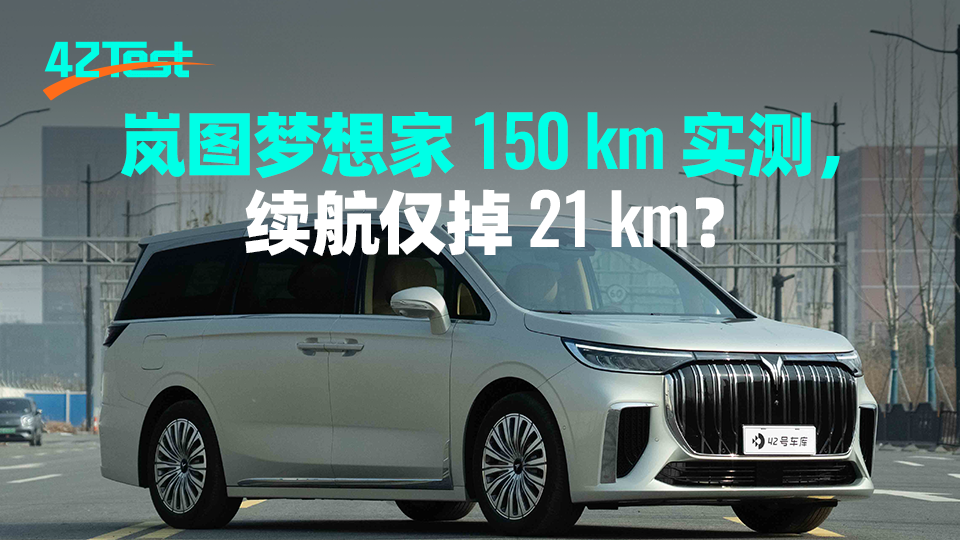According to the sales volume ranking of MPVs released by China Passenger Car Association in January 2023, it can be seen that the sales of joint venture brand MPVs have suffered a heavy blow. The sales of leading brand Buick GL8 dropped sharply by 79.3% compared with the same period last year, and the decline of Mercedes-Benz V-Class also reached 48.2%. On the contrary, MPVs of domestic brand are showing a clear upward trend, with DENZA D9 ranking third and GAC Trumpchi M8/M6 entering the top ten.

In today’s MPV market, new energy MPVs of domestic brands have become a new market that is competing equally. As the high-end new energy vehicle brand under Dongfeng, RANZ’s second model was aimed at the new energy MPV market. Hence, RANZ Dreamer came out, divided into Low-Carbon Edition (hybrid) and Zero-Carbon Edition (pure electric) with a price range from 3.699 million yuan to 6.399 million yuan. Its executive style also makes it competitive with Buick GL8 Avenir and Toyota Alphard.
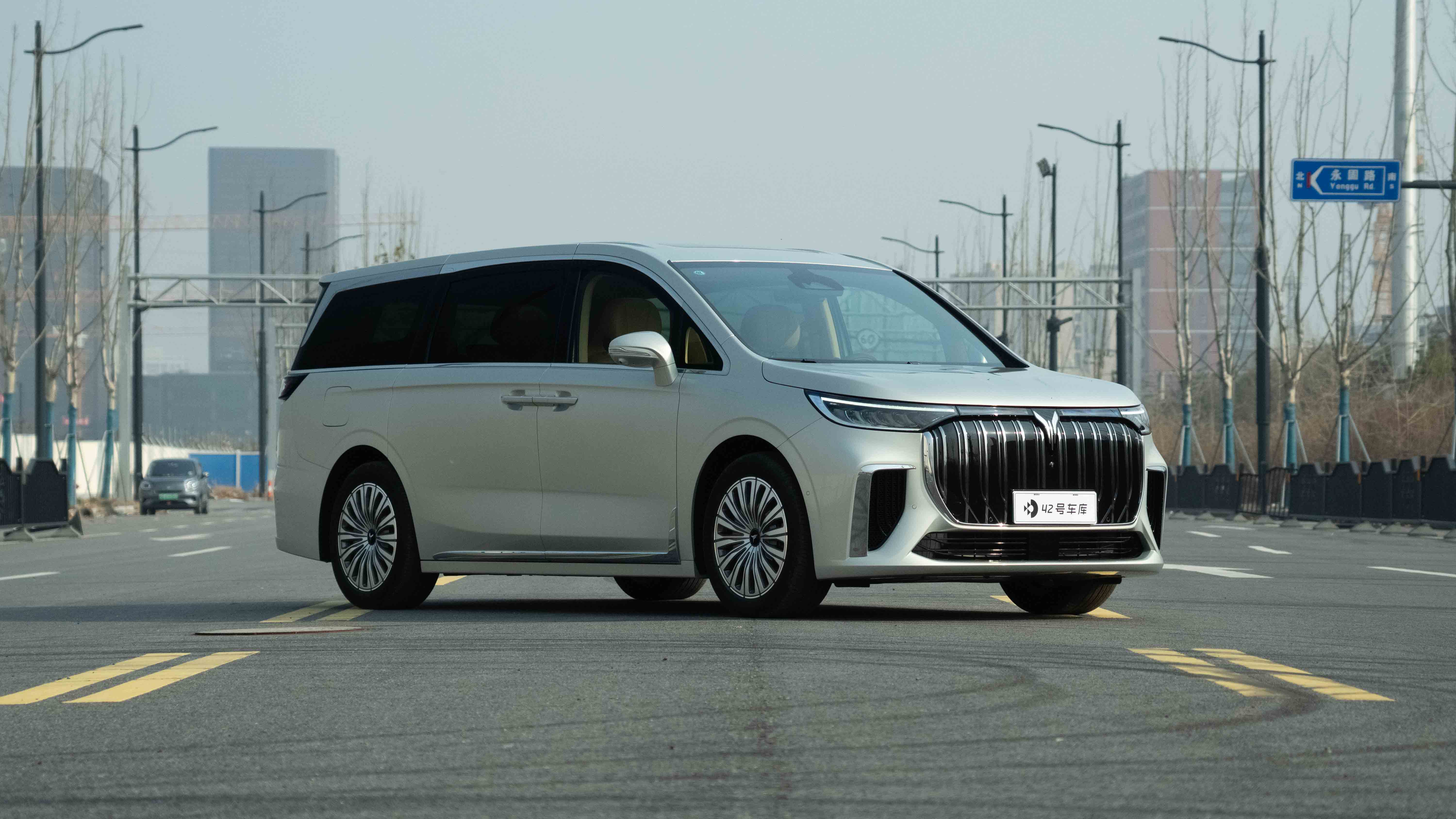
Recently, we got a RANZ Dreamer Zero-Carbon Edition, equipped with Intelligent Driving Package, Intelligent Enjoyment Package, and Range Extension Package, with a total price of 4.699 million yuan. We are also very curious about testing this electric MPV in the 42Test system to see if it can meet the needs of bosses in terms of range, space and performance.
Energy Consumption: As low as 0.2 yuan per kilometer?
If you are lucky enough to pass by office buildings, high-end banquet halls, and restaurants around 11 a.m. to 12 p.m., you will easily notice that there are always several GL8s or Alphards parked on the roadside with lights on. These cars are definitely not for temporary parking, but for cars that need to be parked for several hours, and the drivers usually sit in the car with the air conditioning on. After all, the fuel is paid by the company, and it can guarantee the comfortable temperature inside the car, allowing the leader or boss to get in and out of the car at any time.
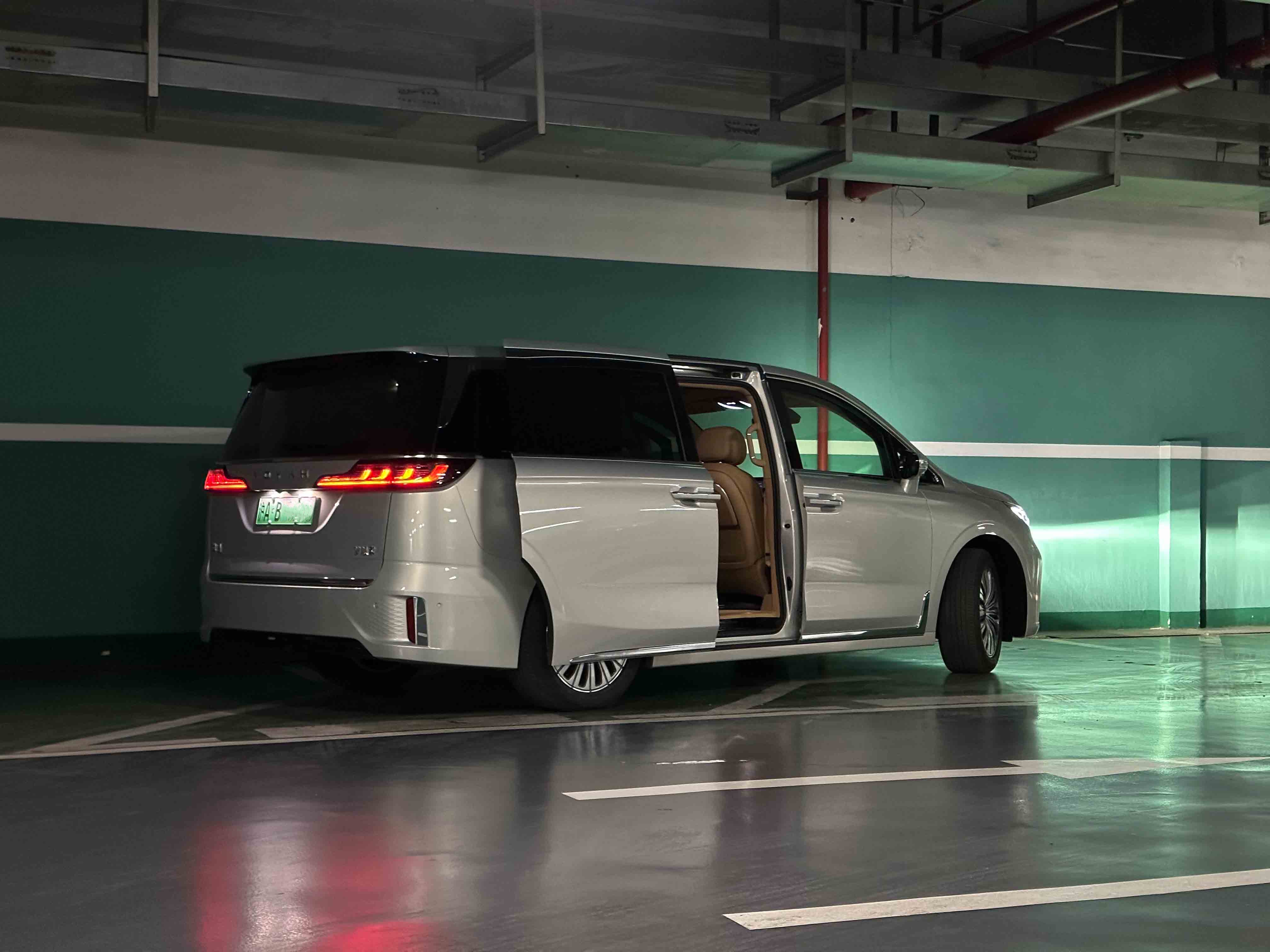 According to the calculation based on GL8, the fuel consumption at idle for a meal is about 6 L, equivalent to burning 50 yuan of 95 gasoline. Pure electric MPVs have a significant value in this scenario, compared to fuel cars with high fuel consumption and low smoothness under congested conditions. In addition, most commercial MPVs are used for reception purposes, shuttling between cities and airports, and do not frequently travel long distances. Therefore, another major advantage of pure electric MPVs is reflected.
According to the calculation based on GL8, the fuel consumption at idle for a meal is about 6 L, equivalent to burning 50 yuan of 95 gasoline. Pure electric MPVs have a significant value in this scenario, compared to fuel cars with high fuel consumption and low smoothness under congested conditions. In addition, most commercial MPVs are used for reception purposes, shuttling between cities and airports, and do not frequently travel long distances. Therefore, another major advantage of pure electric MPVs is reflected.
So first, let’s take a look at the range and energy consumption of the Landtourer Dreamer to see if it can meet the daily needs of bosses.

City Energy Consumption: 550 km is the limit
Our test method includes 50 km of city roads in Shanghai plus one entire lap of the outer ring road for 100 km. The test time is during Shanghai’s evening rush hour, which is also quite consistent with the daily needs of bosses.
On the test day, the outside temperature was 13°C, the tire pressure was 2.9 bar, and the air conditioning was set to 22°C with 2nd gear wind. Under these conditions, after driving 150 km, the Landtourer Dreamer’s dynamic adjusted estimated range only dropped by 21 km, which is very exaggerated and abnormal, as if driving a full tank of electricity from Shanghai to Lanzhou.

Looking at the range decrease per 10 km, the range of the Dreamer actually increased during the first 50 km of city road tests, and even after running for 50 km, the range increased from the estimated range of 401 km to 405 km. This makes me wonder if the Dreamer has the potential for self-generation of electricity. Only after the Dreamer’s speed reached the outer ring road and continued driving, did the estimated range begin to decrease, but the proportion of power consumption is obviously less than 1.
We initially judged that because this Landtourer Dreamer underwent performance testing the day before, the car computer remembered the history of high energy consumption conditions. Therefore, when driven under full power with low energy consumption, the range did not decrease, but instead increased. However, most models with dynamic adjusted range can basically adjust to nearly 1:1 power consumption within 50 km, and the logic on the Landtourer Dreamer is obviously too slow. The purpose of dynamic range estimation is to provide consumers with reference range estimates. In the future, we hope that we can optimize this logic on the Dreamer.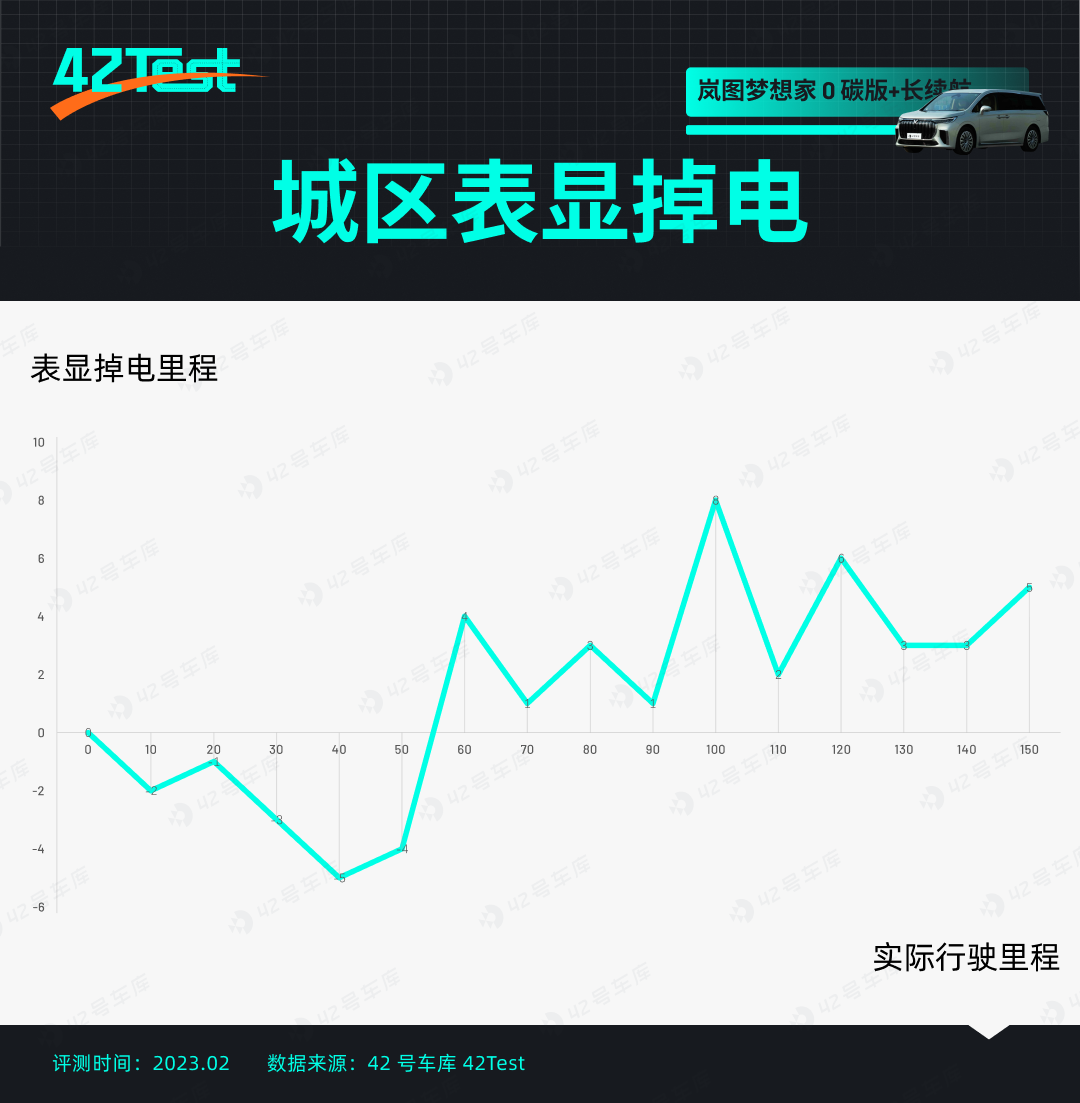
However, according to the calculation based on a consumption of 19.2 kWh per hundred kilometers at 150 km, the theoretical maximum range of the LanTu Dreamer with the extended range package is 566 km. According to this calculation, the daily average driving distance is within 100 km, and it is possible to charge once a week. Even frequent airport trips will not cause range anxiety.
Long-distance range: covering the Yangtze River Delta
Since the LanTu Dreamer mainly focuses on business MPVs, the needs of bosses traveling to remote locations still exist. Therefore, under similar temperature conditions, we immediately tested the long-distance performance of LanTu Dreamer. The vehicle conditions remained comfortable driving mode, air conditioning at 22°C, and second gear wind. Under these conditions, the estimated maximum range of the LanTu Dreamer after a full charge is 371 km.
During the entire high-speed test before the Spring Festival, we were able to drive at a speed limit of 120 km/h, with a final average speed of 103 km/h. Under this working condition, the LanTu Dreamer drove 389 km and the remaining estimated range was only 2 km, with a declared consumption of 26.4 kWh/100 km.

This time the dynamic range estimate of the LanTu Dreamer is much more accurate, maintaining a proportion of 10 km for every 10 km of driving in most cases. In extremely rare cases, such as encountering heavy traffic or long ramps, the proportion may be less than 1:1. However, based on the total 389 km, the actual/declared power loss ratio is 1:0.95, which is very reliable in daily use.
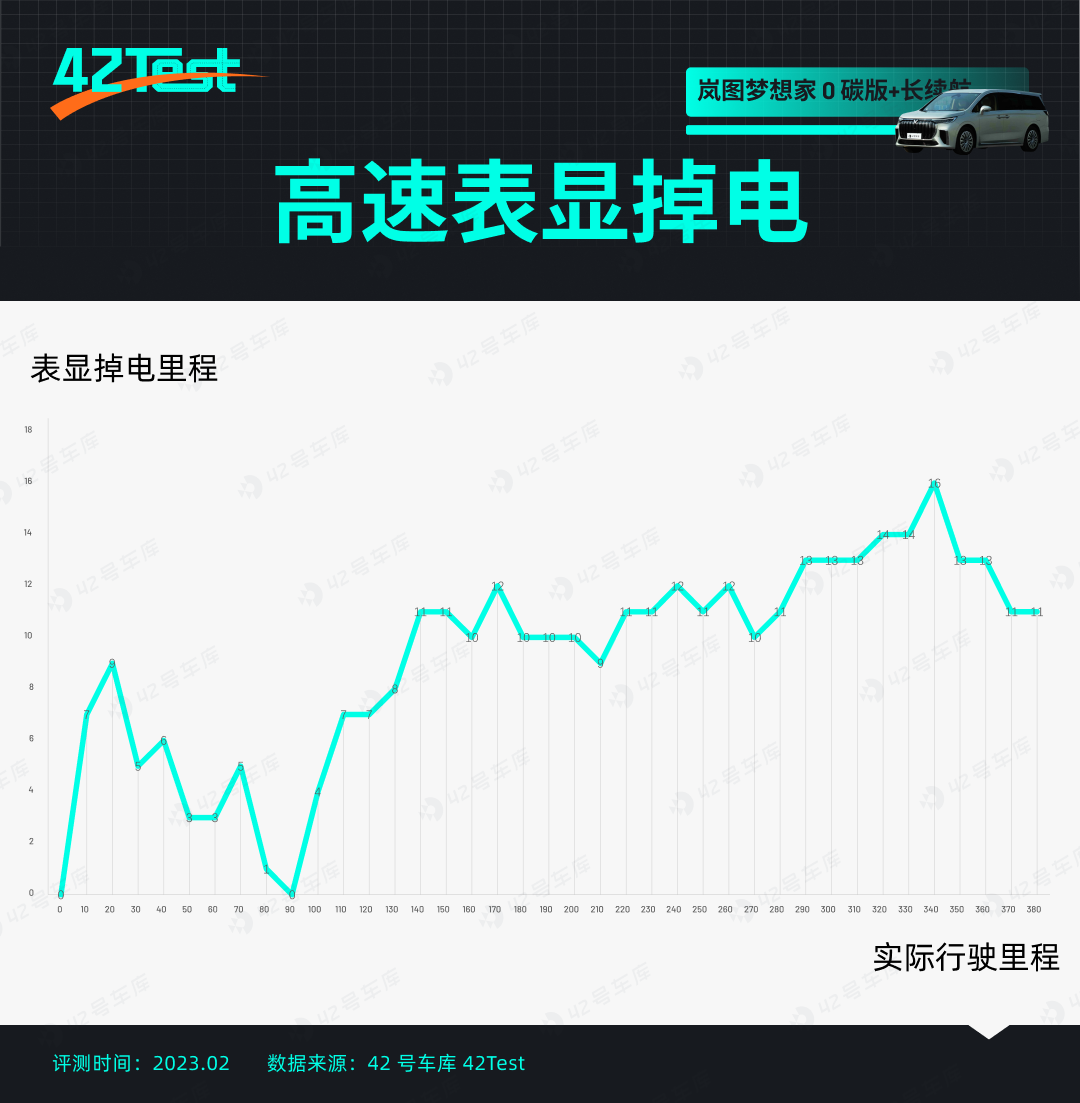
When the LanTu Dreamer’s battery level drops below 10%, the vehicle’s power has not decreased significantly, and the speed can still be maintained above 120 km/h. There is also a certain degree of acceleration when accelerating to ensure safety in special circumstances.
Here’s the translated English Markdown text with HTML tags preserved:
However, the actual test range of 389 km and displayed energy consumption of 26.4 kWh/100 km for a 320 kW dual-motor, 2.6 ton MPV is average. Fortunately, its 108.7 kWh battery capacity is large enough to cover the main cities in the Yangtze River Delta region on a single trip after being fully charged in Shanghai.

However, when recharging is required during the journey or there are other travel arrangements that need to be made, the charging speed of the Zero Emission Landjet Dreamhouse is a crucial factor. The charging speed and time required for a full charge at different intervals have become the most concerning issues for everyone using the vehicle.
Charging: Peak 91 kW
This time, we chose a charger with slightly higher power, which is a 250 kW charger with a maximum current of 250 A and a maximum voltage of 1,000 V. Therefore, theoretically, there shouldn’t be a big difference in tested power for the Landjet Dreamhouse on a 400 V voltage platform.
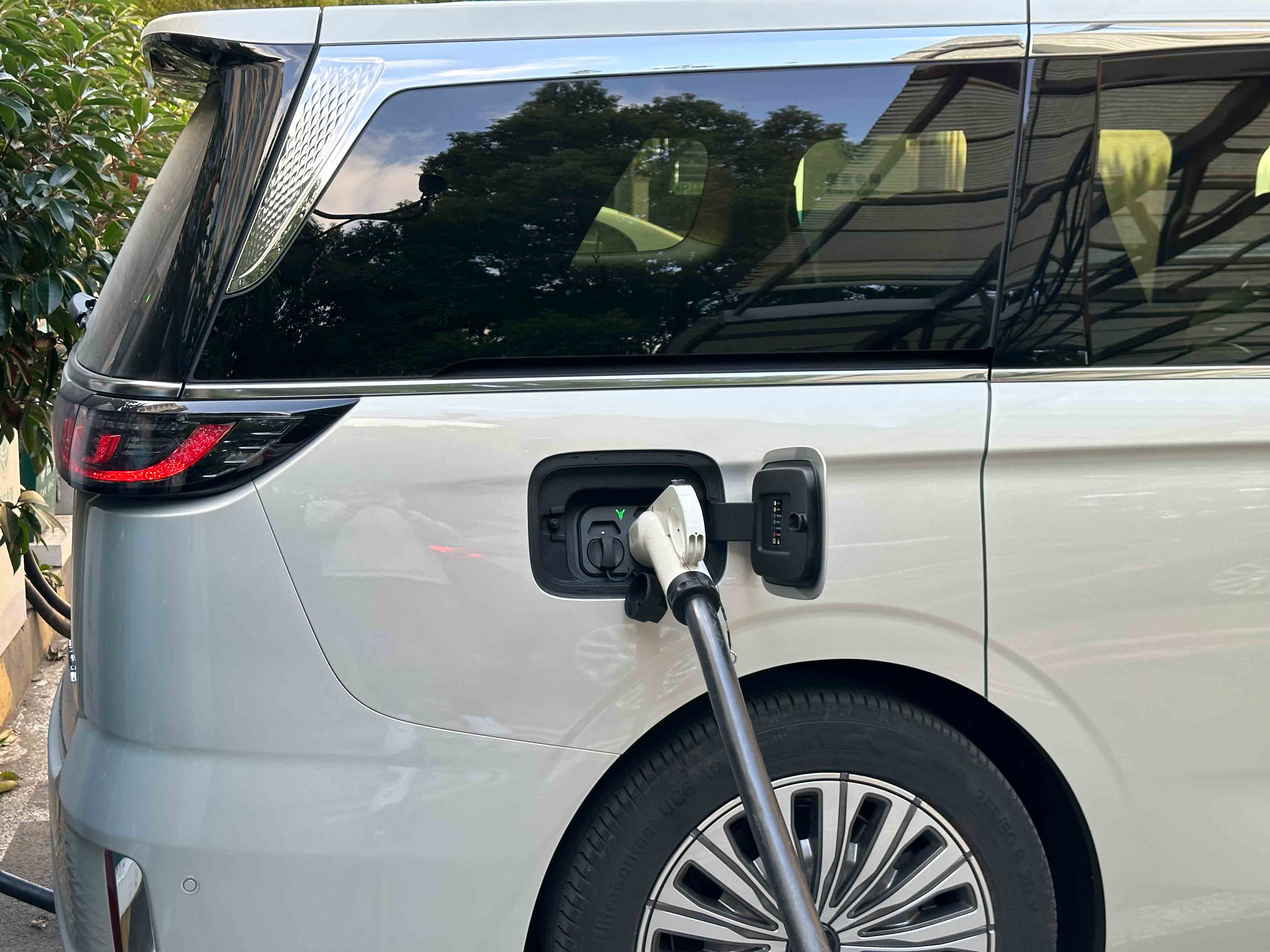
We started testing the charger when the battery level was below 5%. Once the charger was connected, the maximum current immediately reached 247 A, which is very close to the maximum current at the charger end. Due to the low battery level, the charging power at 5% was only 77.8 kW. As the battery level rose progressively and the voltage increased, the power also gradually increased to 90 kW and reached the peak power of 91.1 kW at 80% State of Charge (SOC), after which the current began to drop.

When the battery SOC reached 90%, the vehicle automatically locked the maximum current at 52 A, resulting in a cliff-like drop. At the same time, the maximum power directly dropped from 73.7 kW to 19.3 kW and continued to charge until it was fully charged.
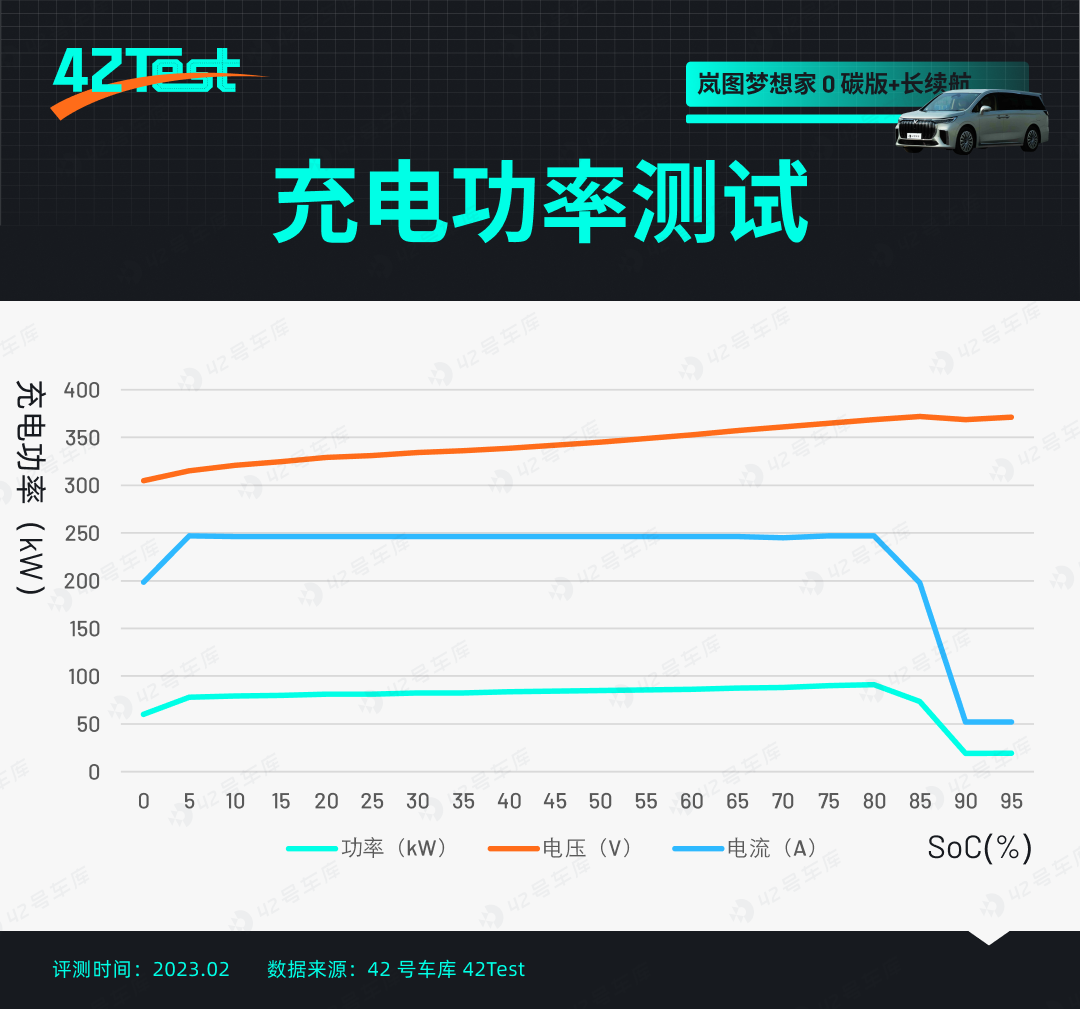
The charging time for the battery of the Landtourer Dreamer increases from 5\% to 80\% is 58 minutes, which is close to an hour, and it takes 31 minutes to reach 80\%-95\%. Therefore, the efficient charging area for daily use is between 5\%-80\%, and it does not matter to fully charge it again if there is extra time. The charging rate of 1C is not excellent for this 108.7 kWh battery, so it is necessary to plan the time for energy supplementation during long-distance travel.
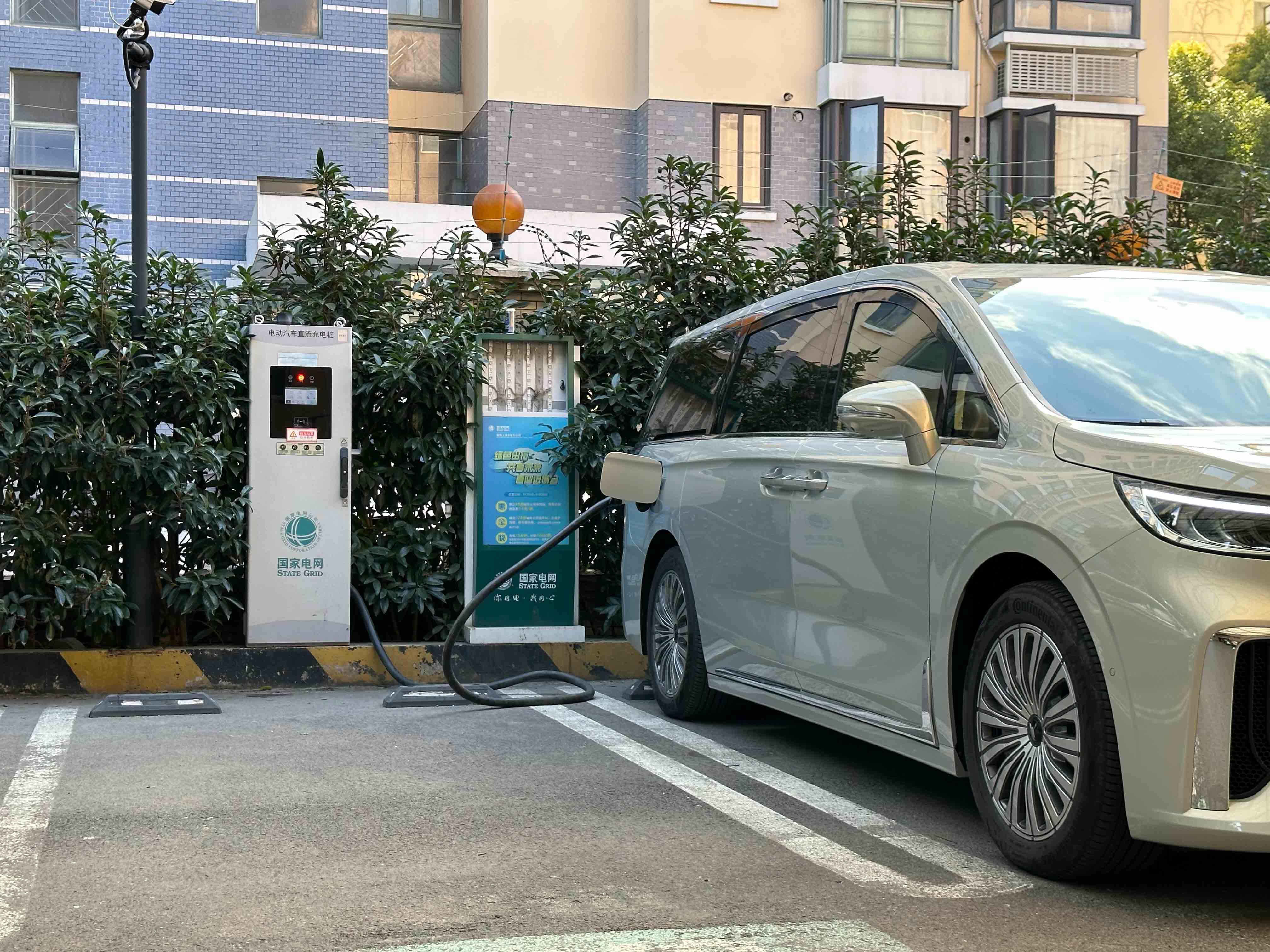
By the way, the Landtourer Dreamer starts charging when the remaining range is 2 km, and the charging amount after reaching 100\% is 107.452 kWh. According to the electricity rate and service fee at that time, the total cost is 143 yuan, which is equivalent to 36.7 yuan per 100 kilometers. If energy supplementation is performed during the valley electricity stage, the cost that the electric MPV can save compared to fuel-based MPVs like GL8 will be very significant.
Dynamic: Non-business Business
Recently, when I was paying attention to MPVs on the road, I found an interesting phenomenon. More and more Toyota Alphas and Honda Odysseys have started to be modified with exaggerated kits, twisted teeth shock absorbers, and multiple wheel sets to make MPVs have a fighting posture.
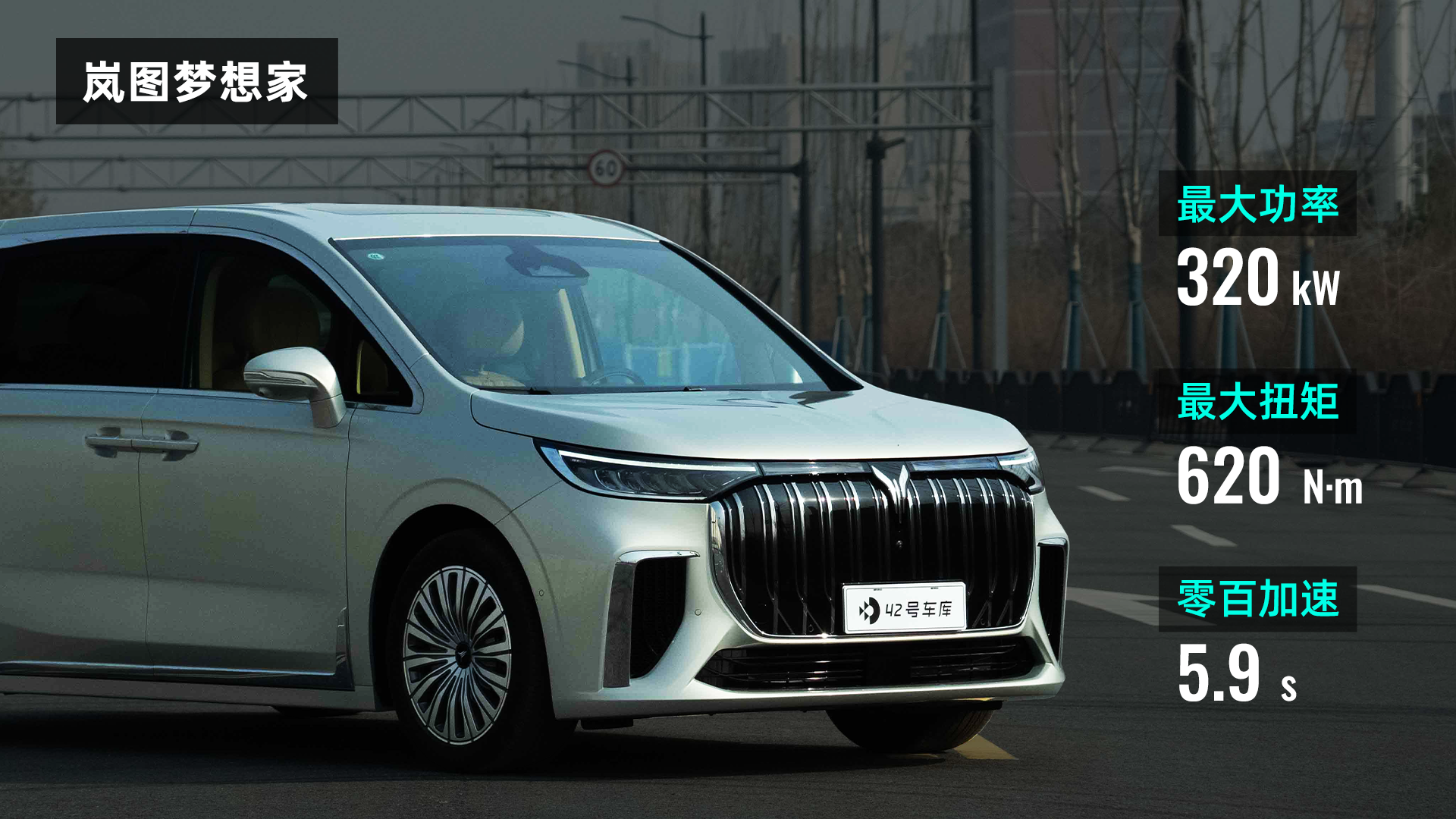
Here at Landtourer Dreamer, there is no special combat in appearance, but the front double-wishbone and rear five-link suspension, air spring, CDC electromagnetic shock absorber, dual-motor four-wheel drive with a maximum power of 320 kW, a maximum torque of 620 N·m, and acceleration from 0 to 100 km/h in 5.9 seconds. It’s like a performance car wherever you go. So we also drove this big business car and didn’t do the right thing.
Performance Test
Landtourer officially claimed that the Dreamer’s 0-100 km/h acceleration time is 5.9 seconds. It was not until we tested continuously ten times on the field that we found out that the 5.9 seconds of the results are reverse virtual standard. The best accelerating result was 5.36 seconds, and the average result of ten accelerations was 5.39 seconds. Red lights are like golf GTIs and other small steel cannons that can barely surpass the Dreamer with such terrifying acceleration. If you really need to catch a plane or train, the Landtourer Dreamer can help you pass the last performance test.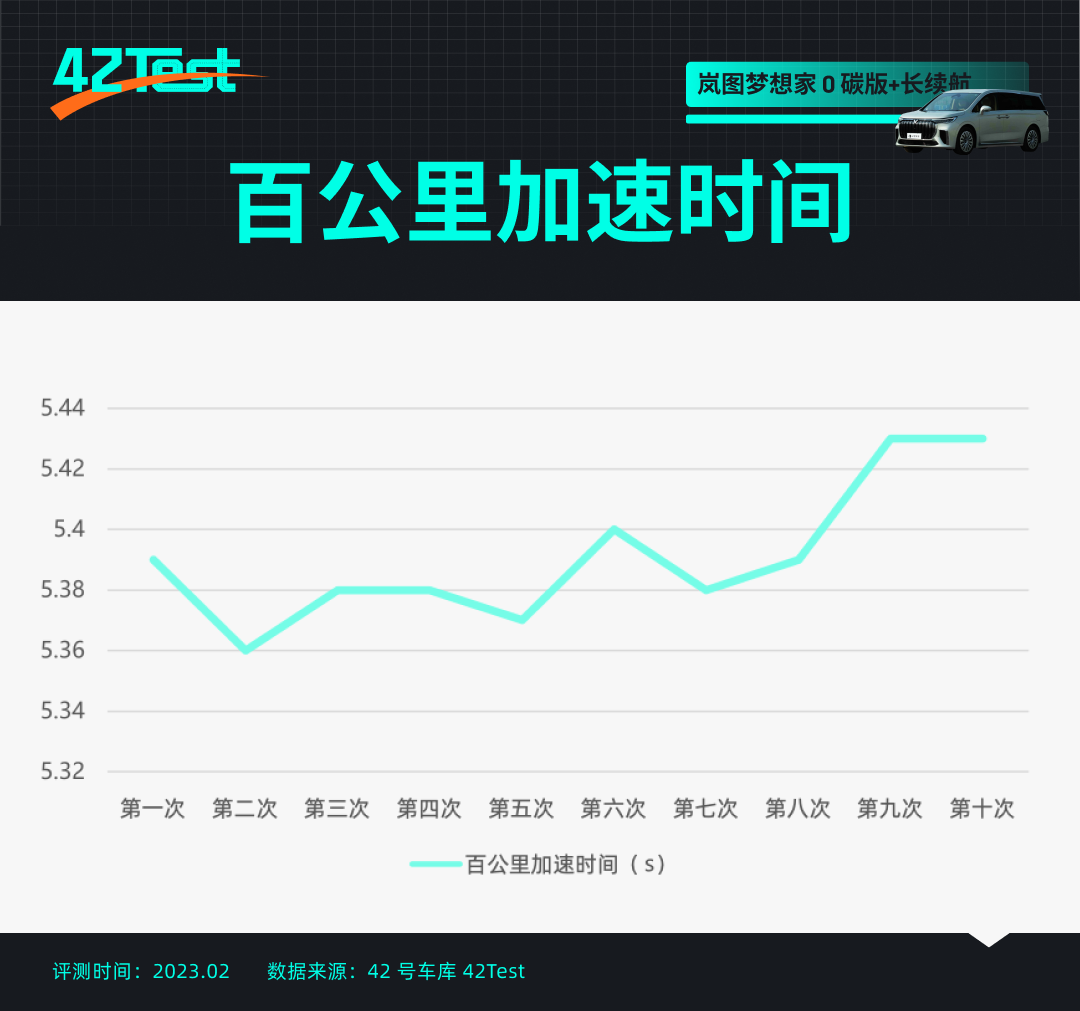
The suspension with a comfort-oriented approach makes the vehicle significantly tilts up during dynamic acceleration even with air suspension. The tilting posture can last above 100 km/h, which is really exaggerated.
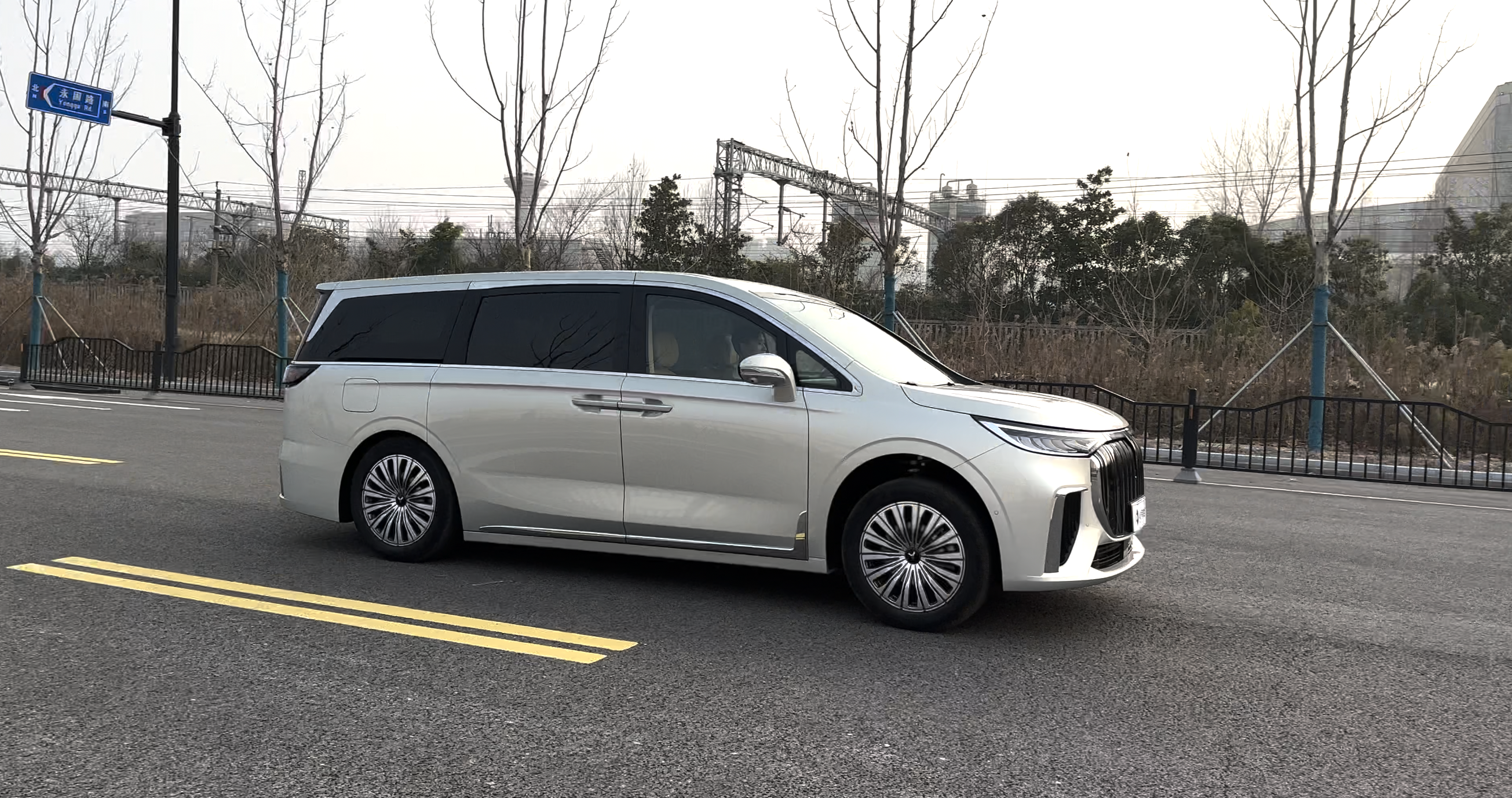
So we also tested the braking distance per 100 km. It is not easy to reasonably control the cost and ensure the stability and continuity of the braking force for such a heavy vehicle. According to the official announcement, the braking distance is 37 m. We have tested ten braking performances with outstanding results. The longest was no more than 36.41 meters, and the shortest was only 34.39 meters. During the ten consecutive braking tests, there was no braking force attenuation, and the average result reached 35.52 metres, which is another reverse virtual standard result.
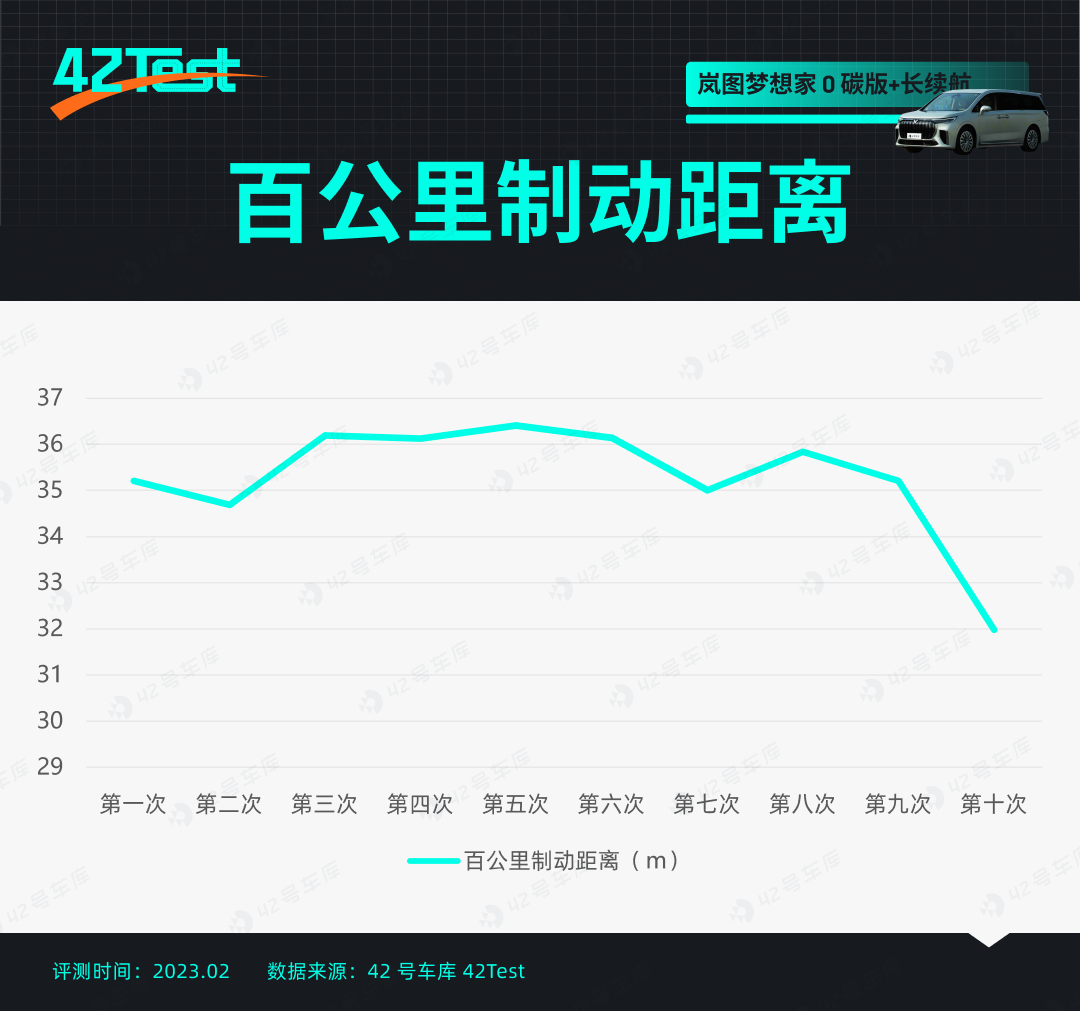
As for the braking posture, the Landtu Dreamer controls it well. Unlike the exaggerated tilting trend during acceleration, the head-control during full braking is still reasonably good. Moreover, there were no jittering or deviation phenomena throughout the whole process, and the control degree was relatively excellent.
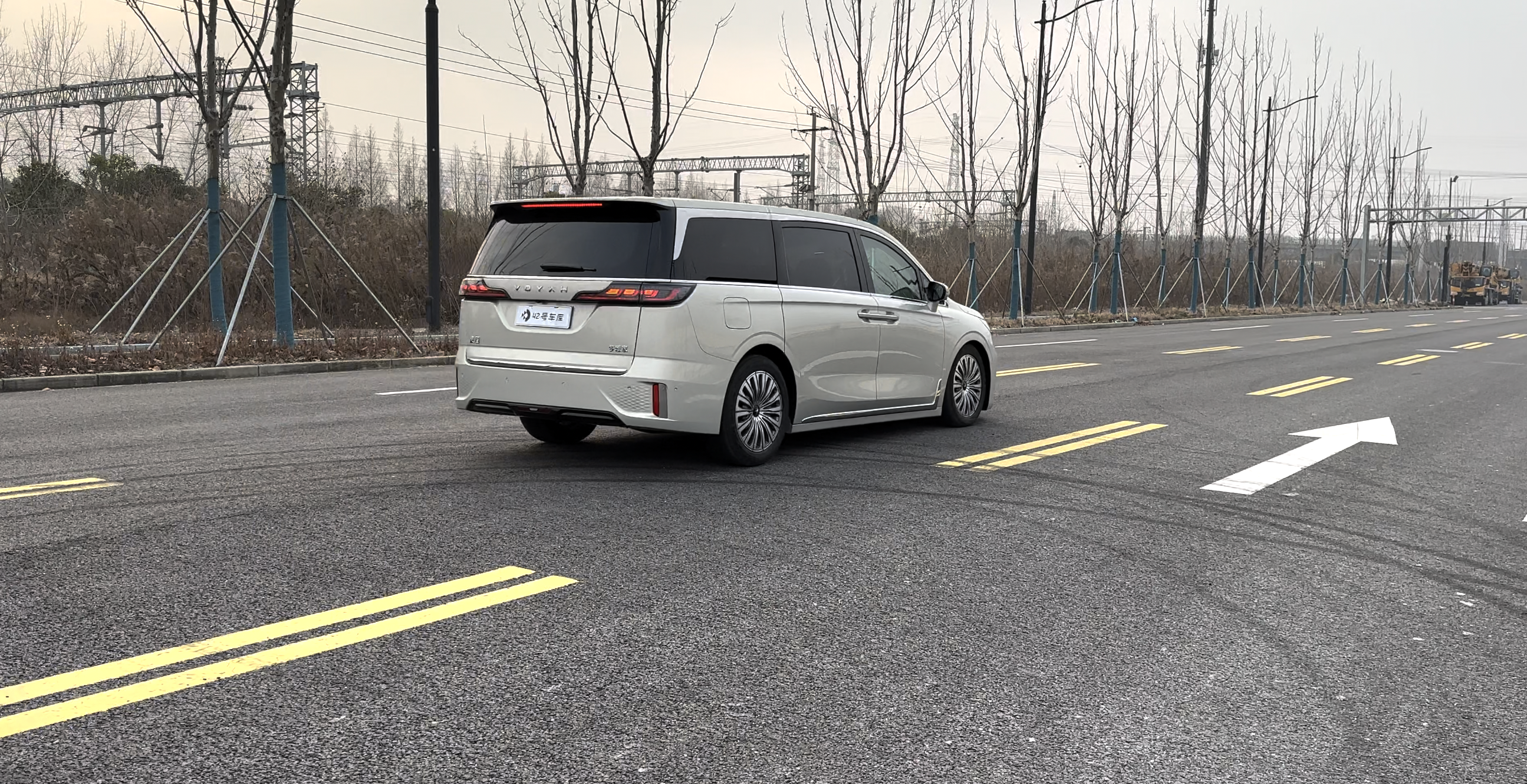
The outstanding acceleration and braking results are closely related to the 255/50 R20 size Maxxis UC6 tires equipped on the Landtu Dreamer. These tires not only focus on noise reduction and comfort but also ensure excellent dry/wet grip.
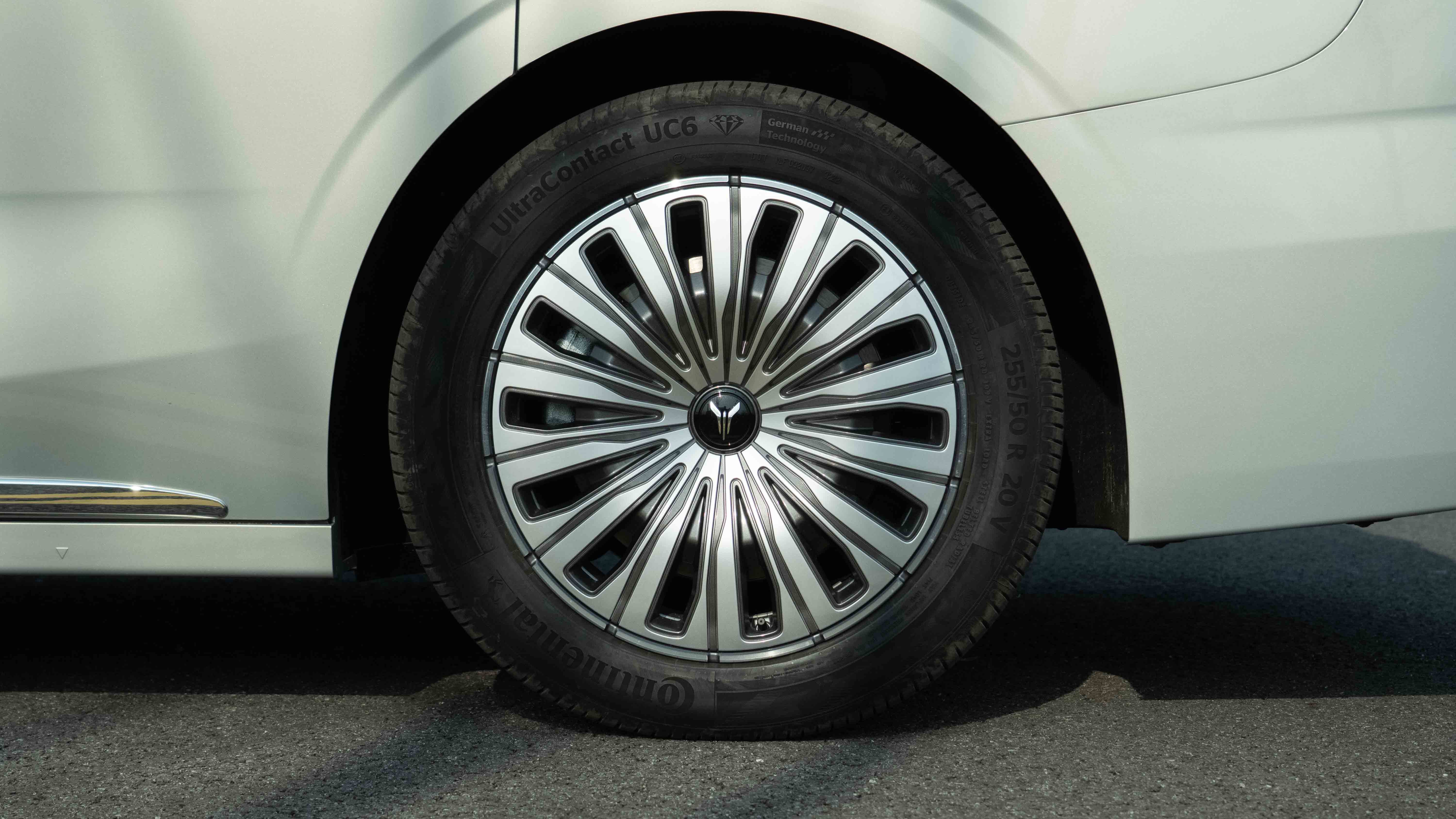
Dynamic Driving Experience
After the acceleration and braking performance tests, I also had a good experience of driving the Dreamer. Under daily driving conditions, the steering feel of the steering wheel is moderate compared to other large vehicles. After the driver sets the angle, the follow-up of the vehicle is relatively linear and easy to control. The travel range of the accelerator and brake pedals is relatively long, which is conducive to accurately controlling the vehicle’s acceleration and deceleration movements, making it a good MPV to drive.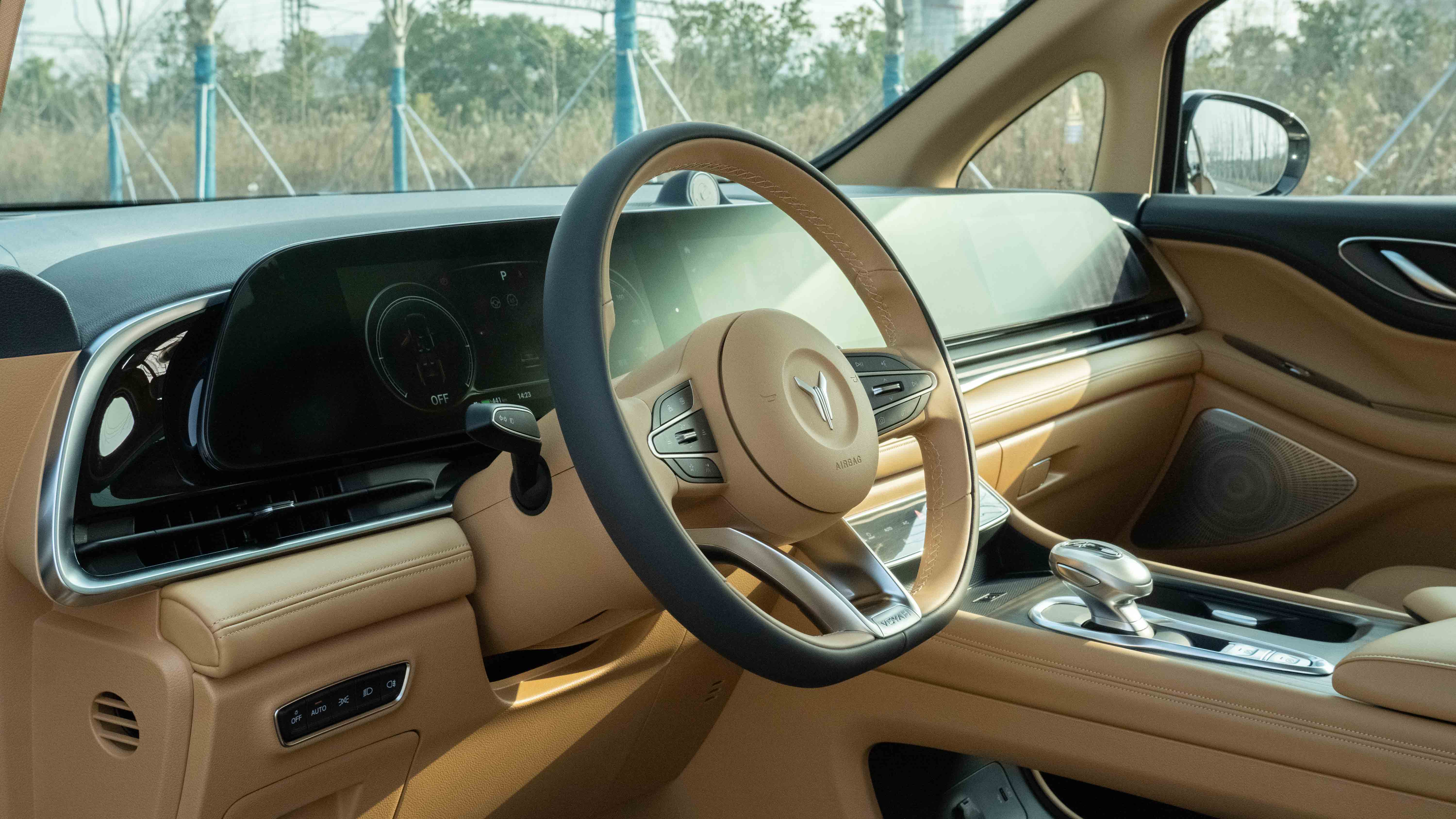
As the driver’s driving rhythm increases, the rhythm of the car’s dynamics will slow down by one beat, especially when changing lanes quickly, the magnitude of the body lean will be larger. Even when the vehicle is in “high energy mode”, the suspension still exhibits significant lean during turns. This sluggish weight transfer creates a boating feel, but the overall control of the vehicle is still manageable. In the end, this is an MPV, which does not require agile follow-up, but instead, like a boat, can resolve bumps, and slower weight transfer also helps to be more in line with comfort.
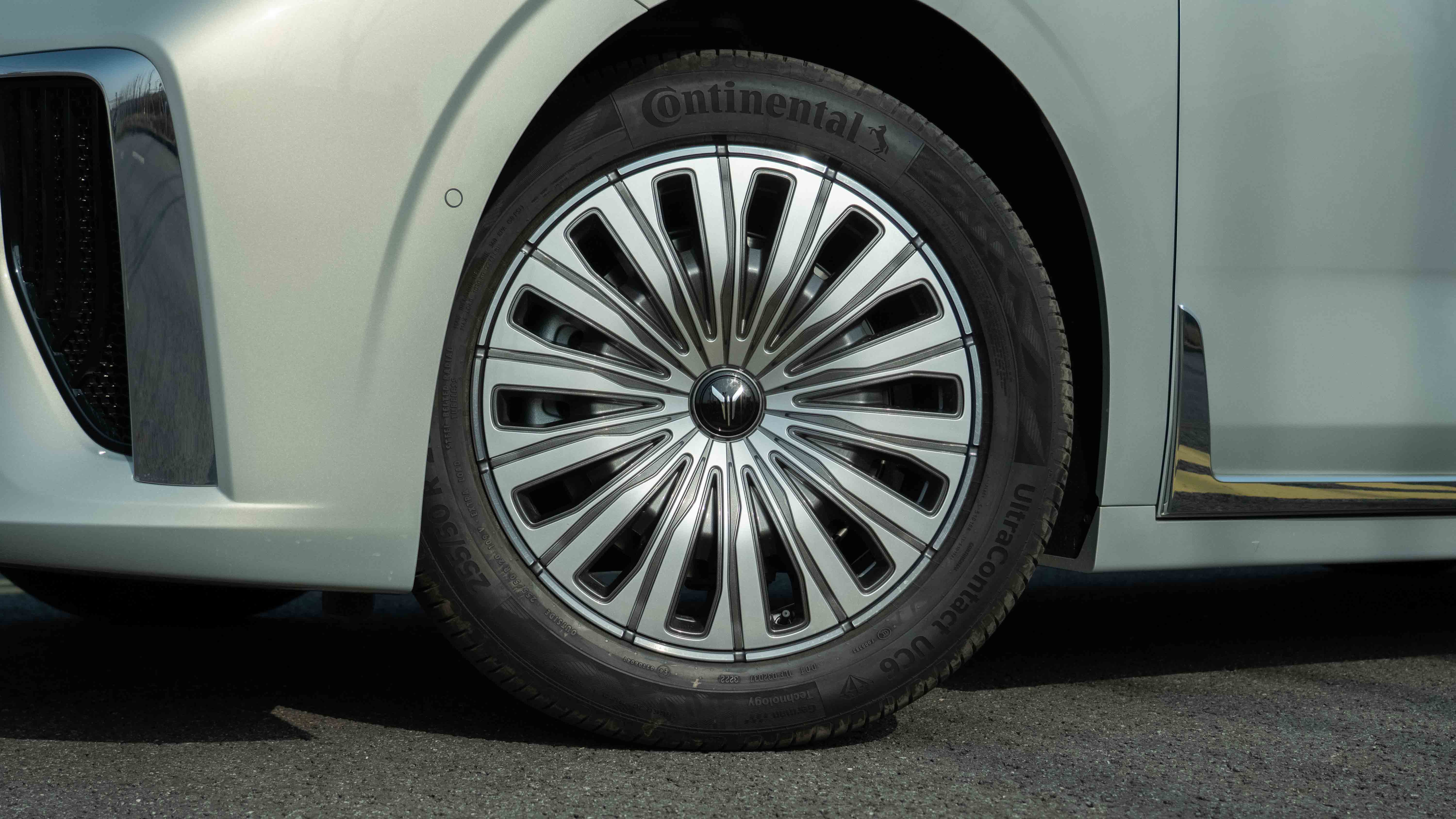
Regarding shock absorption, whether it is the front or rear seats, most of the obvious bouncing can be blocked, and the method of resolving it is resilient, not only eradicating the road feel. This point is commendable. Especially on very smooth pavement, such as highways and elevated roads. The resiliency and isolation of the suspension system in the Dreamer set are of high-end quality.
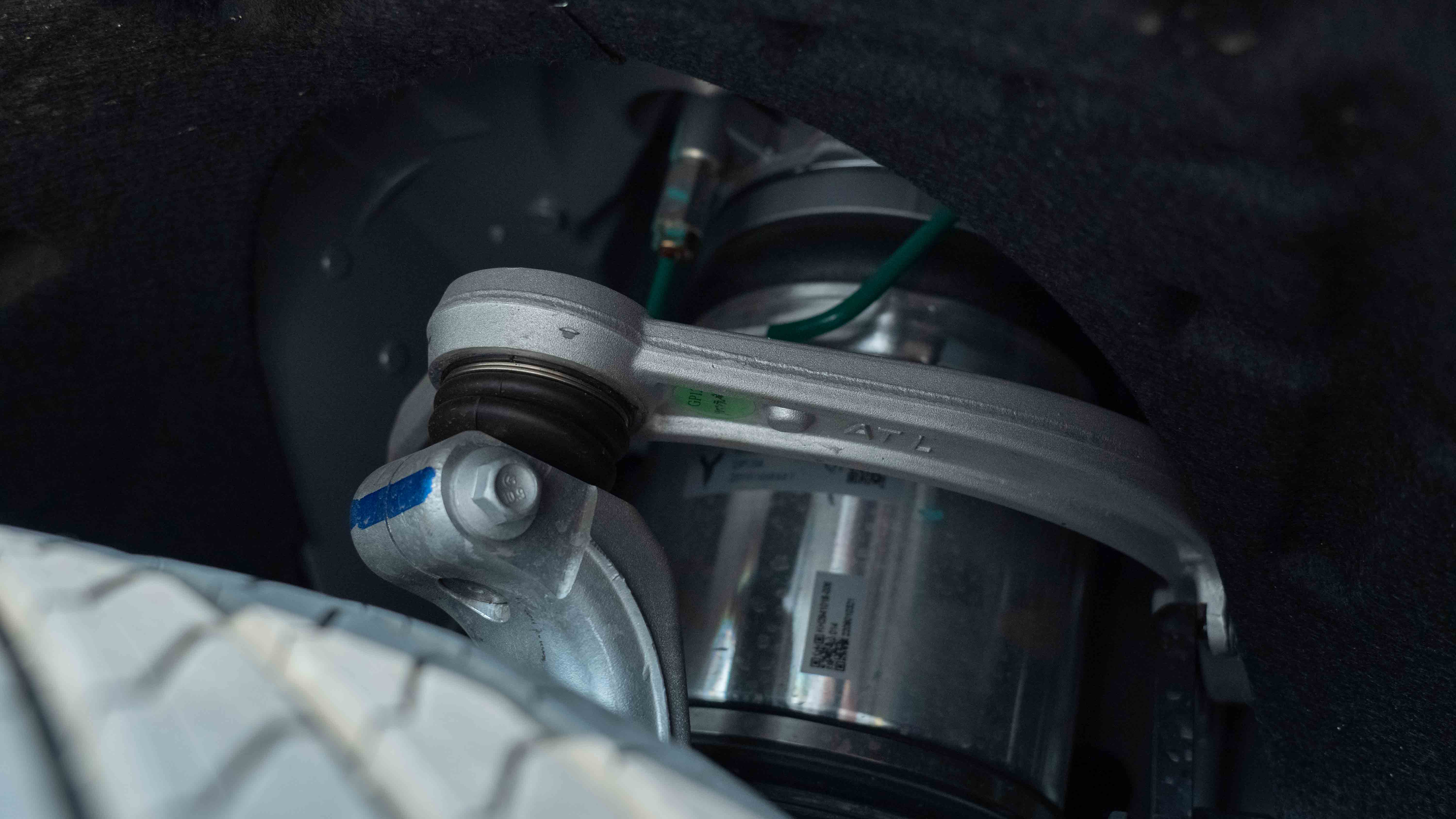
On bumpy and high-frequency vibrating surfaces, the current handling is slightly inferior, and the road feel transmitted to the cabin is a bit too much, which is clear to the driver, but not so for the passengers in the back row.
Compared with other models, the NVH of the Langtu Dreamer is not superior. The main reason is that when most peer products have used double-layer laminated glass for the whole car, Langtu Dreamer only equipped the front row with double-layer laminated glass, and did not consider this configuration for the rear row. Fortunately, the noise source of the Langtu Dreamer is more balanced, with no outstanding problems, which will not make you feel annoyed.

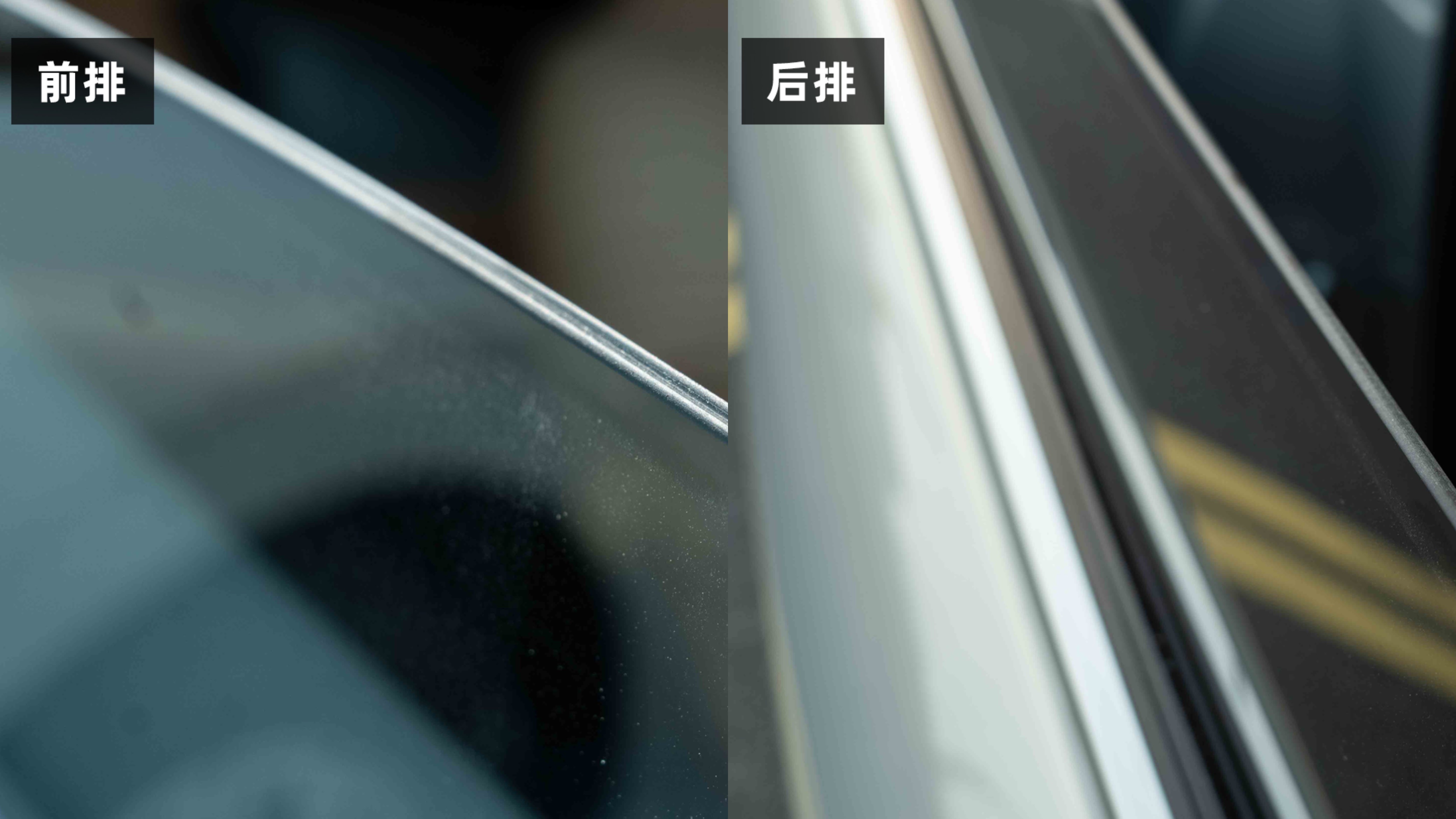 Overall, the Dreamer’s driving style emphasizes stability and comfort, without any significant lateral sway or vertical bounce even when going over bumps or rough roads. This provides a luxurious riding experience for most scenarios, albeit with some minor noticeable handling issues on uneven terrain, hence a higher requirement for the Dreamer’s suspension capability.
Overall, the Dreamer’s driving style emphasizes stability and comfort, without any significant lateral sway or vertical bounce even when going over bumps or rough roads. This provides a luxurious riding experience for most scenarios, albeit with some minor noticeable handling issues on uneven terrain, hence a higher requirement for the Dreamer’s suspension capability.
Space: 4-passenger seating is optimal
After observing for a period of time, it is rare to see commercial MPVs like the Toyota Alphard or Buick GL8 filled with 7 passengers. In most scenarios, there are only 4 passengers, or just the driver and 2 passengers in the back seat. Therefore, we will examine the space performance of the Dreamer under two conditions: 4-passenger seating and full occupancy.
As for me, I am 175 cm tall and weigh 65 kg, which makes the front seat a suitable driving position for me. When there are four passengers, the legroom in the back seat is very spacious, allowing for almost the distance of an arm’s length and the legs can be almost fully stretched.
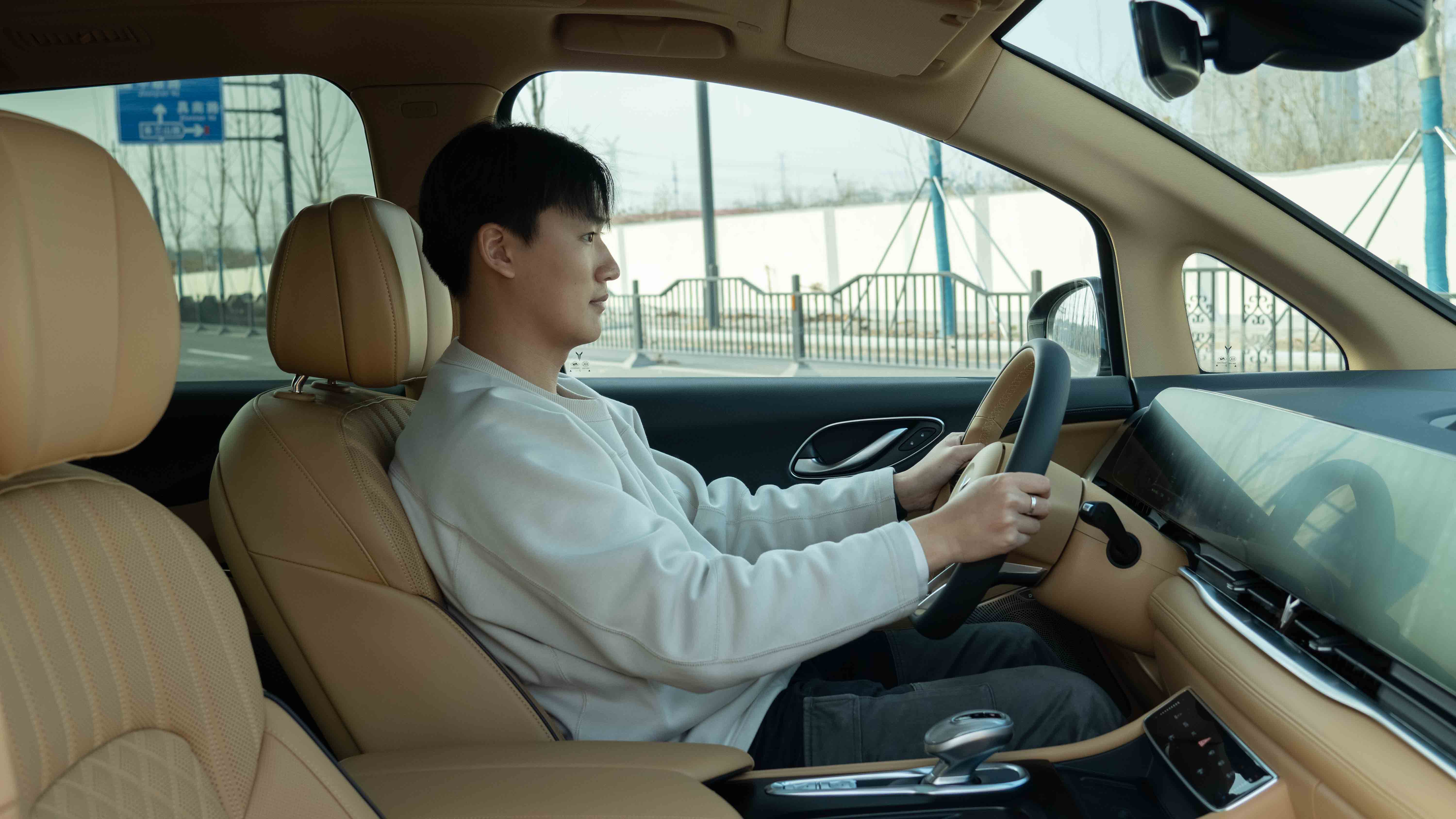
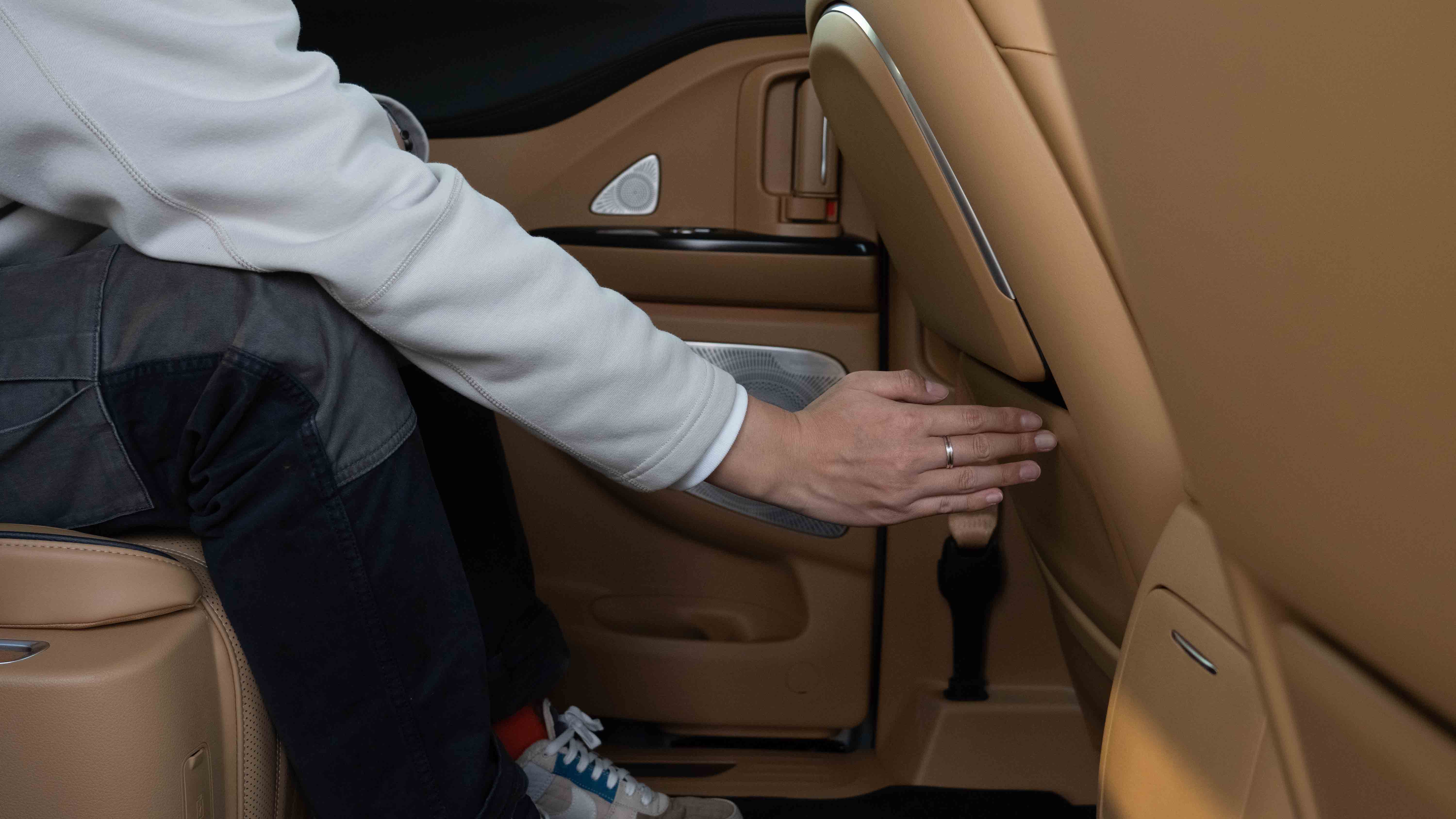
The Dreamer’s back seats have 8-way power adjustment, in addition to heating, ventilation, and massage functions. However, the one downside is that the front and rear adjustment of the seats is manual, which is not as luxurious and makes it difficult to control during acceleration and deceleration. The benefit is that the Dreamer’s second-row seats have very long slide rails, which makes manual adjustment much more efficient.
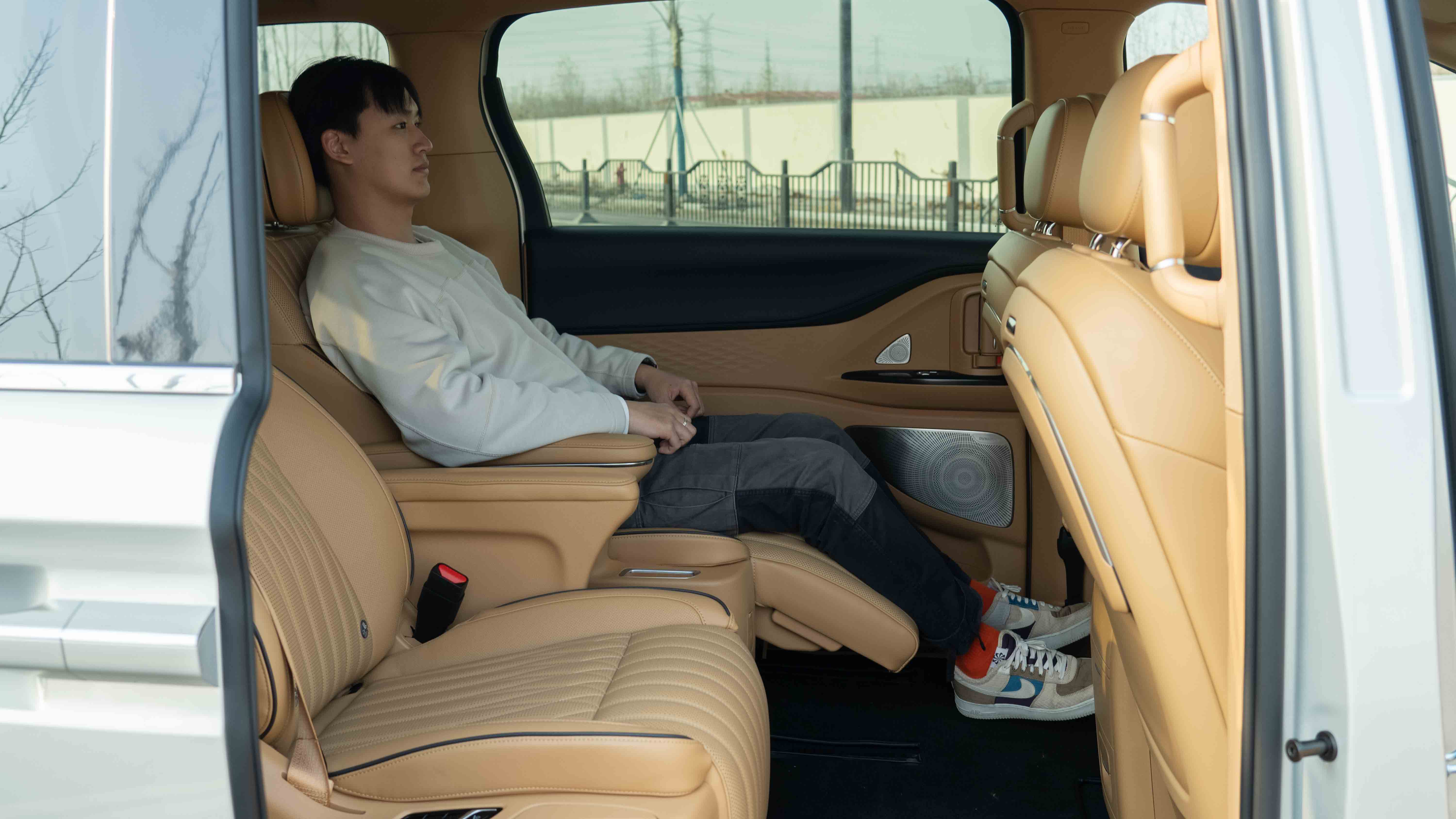
In the 4-passenger scenario, by reclining the second-row backrest to approximately 35° (maximum of 155°) and adjusting the leg rest to 70°, combined with a soft cushion that can be extended from 530 mm to 730 mm, and a spacious 335 mm high aviation seat, the second-row passenger experience is quite comfortable.
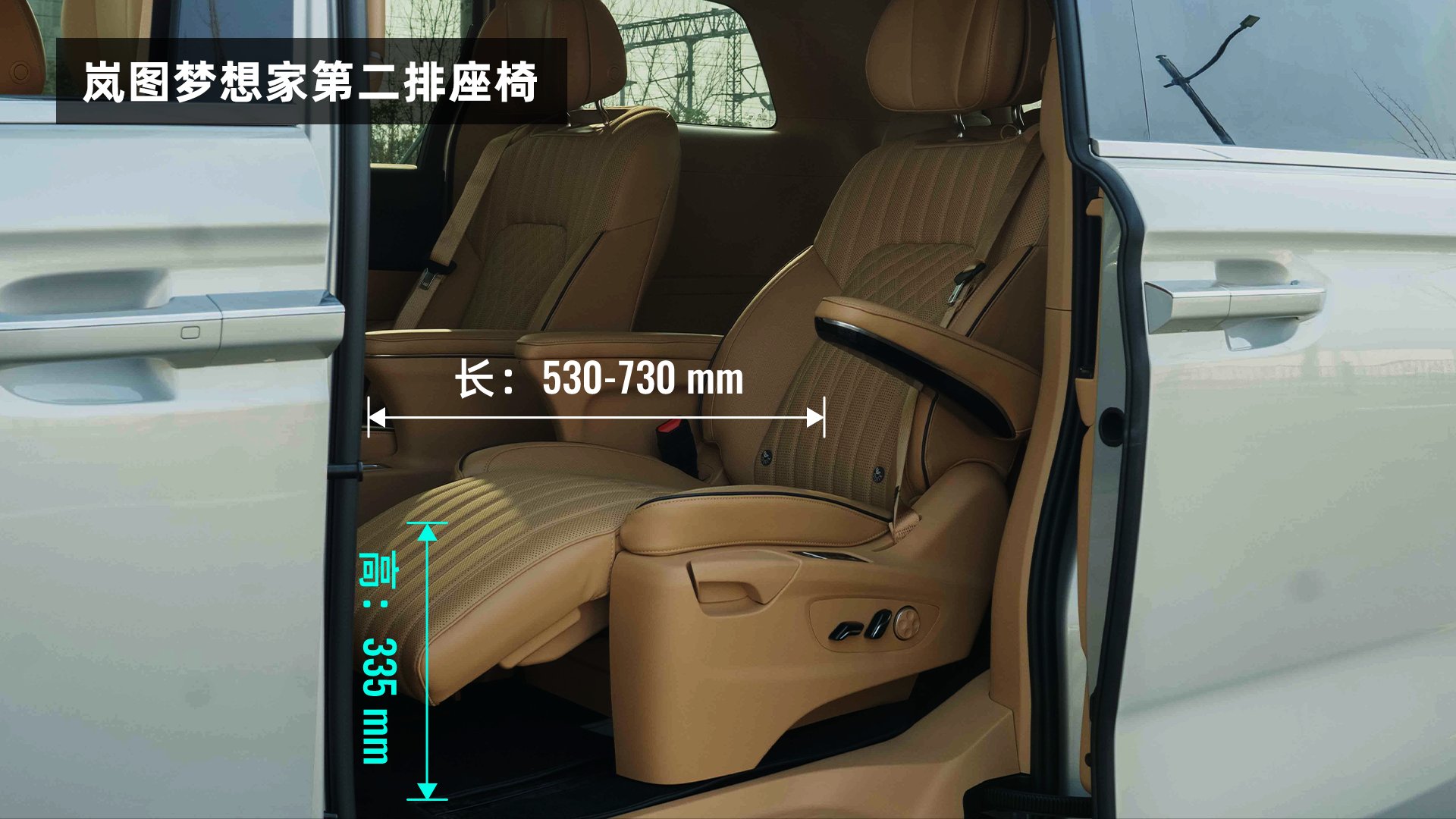 The backrests of both the driver and passenger seats are equipped with small tables, which can hold a 13-inch laptop, snacks, and drinks without any problem. The material of the small tables is delicate and has a certain degree of anti-slip ability.
The backrests of both the driver and passenger seats are equipped with small tables, which can hold a 13-inch laptop, snacks, and drinks without any problem. The material of the small tables is delicate and has a certain degree of anti-slip ability.

As for power supply, it provides a standard USB port, a USB-C port that supports up to 60W, and a car power supply. There are also two cup holders and a storage compartment. There is no need to worry about charging and storage. However, it is a pity that more and more models on the market are equipped with three-phase socket panels in the rear seats, and the Dreamhouse does not have this feature.
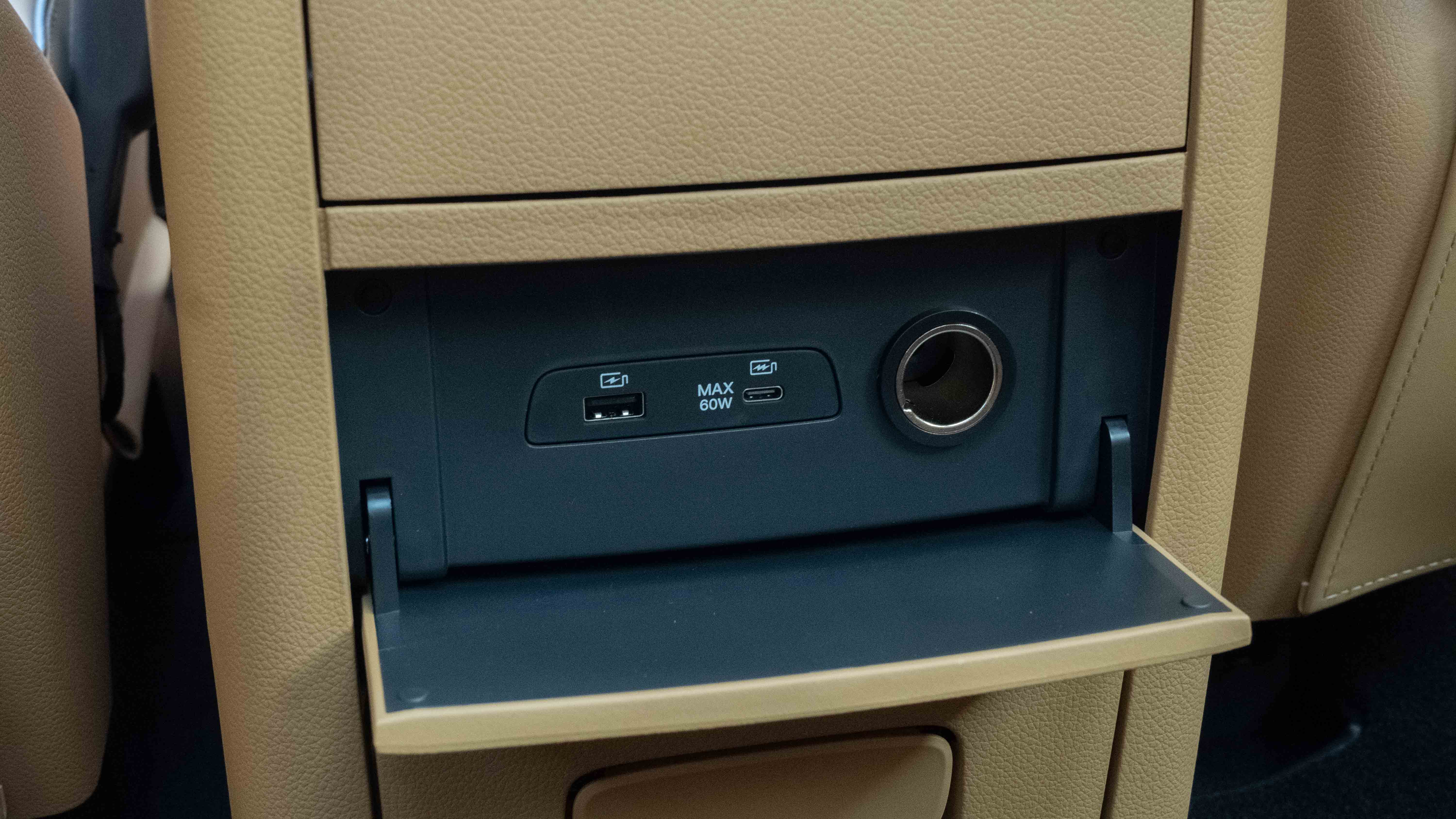
It is worth mentioning that the second-row seats of the Dreamhouse have a one-click return function. When the owner gets off the car, the seat just remains in a lying position. However, it is not convenient to get on the car when the seat is lying down. After one-click return, the backrest and leg rest will be restored to the preset value, making it easier to get on the car.
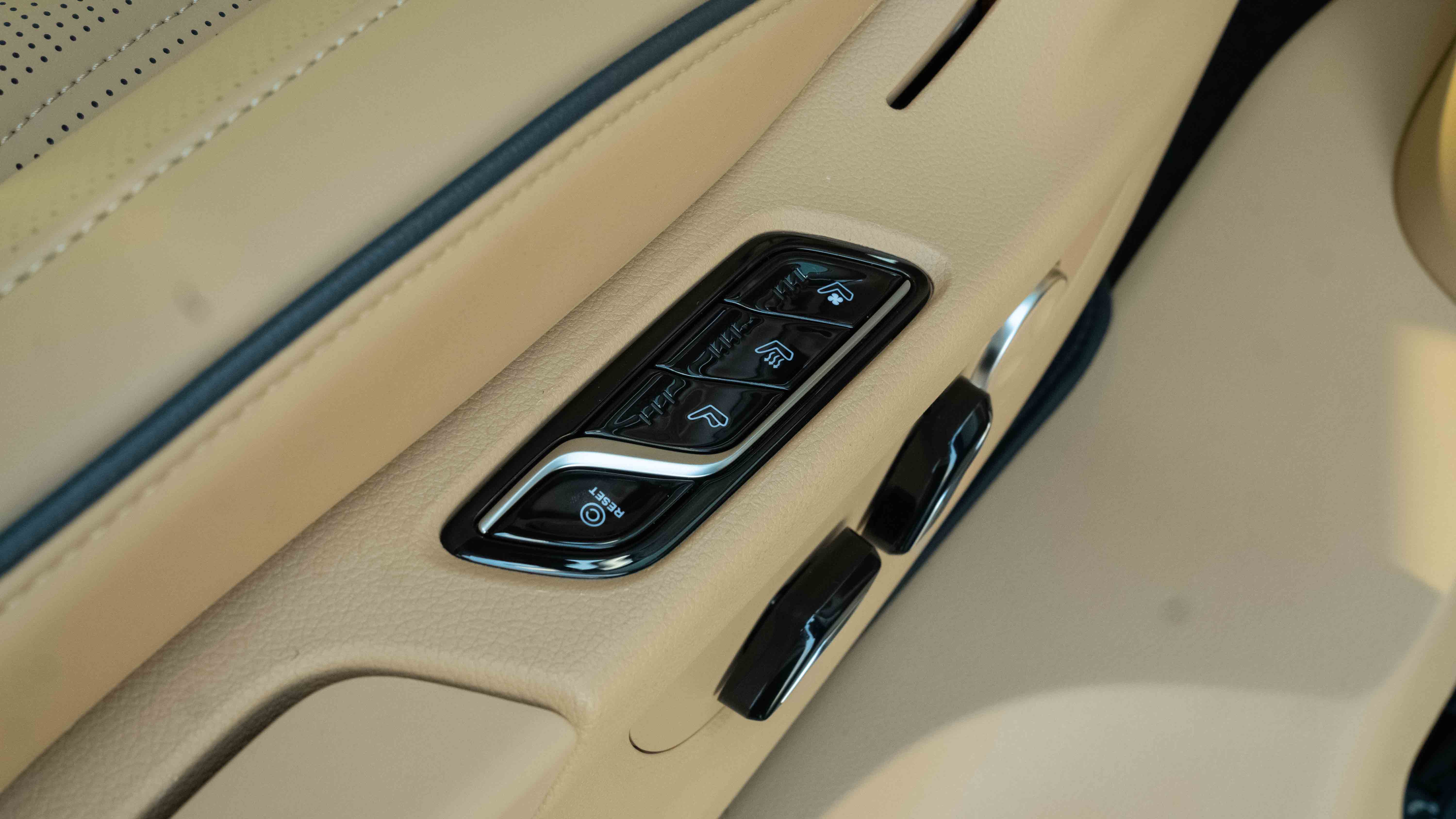
Let’s take a look at the 7-seater situation of the Langtu Dreamhouse. The driver’s seat is in a normal driving position, and the legroom of the second row is controlled to the length of a fist. The legroom of the third row is also just a fist’s length, neither of which is particularly spacious.

Second row
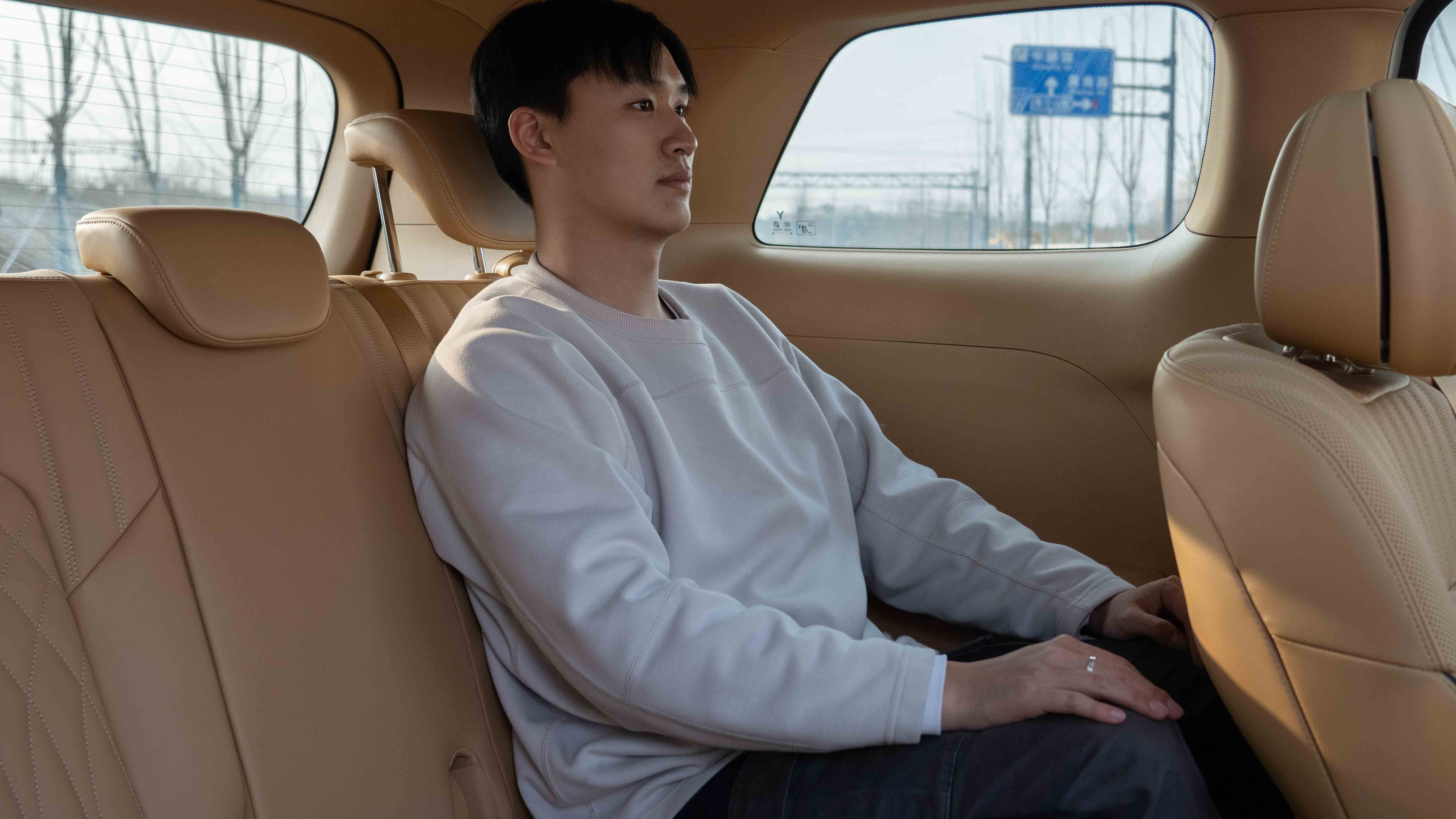
Third row
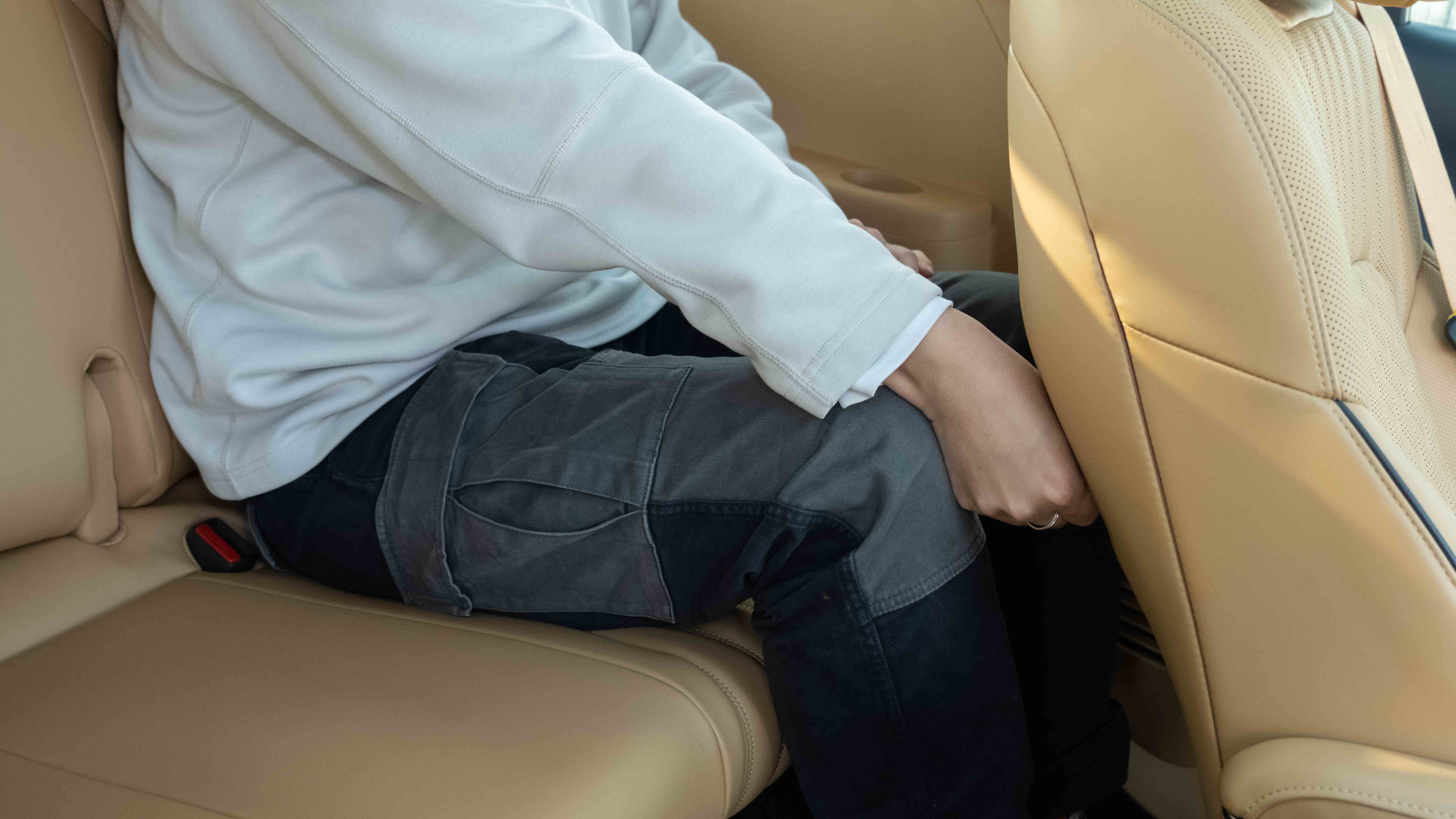
The headroom of the third row is quite abundant and reaches the length of a palm, unaffected by the sunroof curtain mechanism of the second row.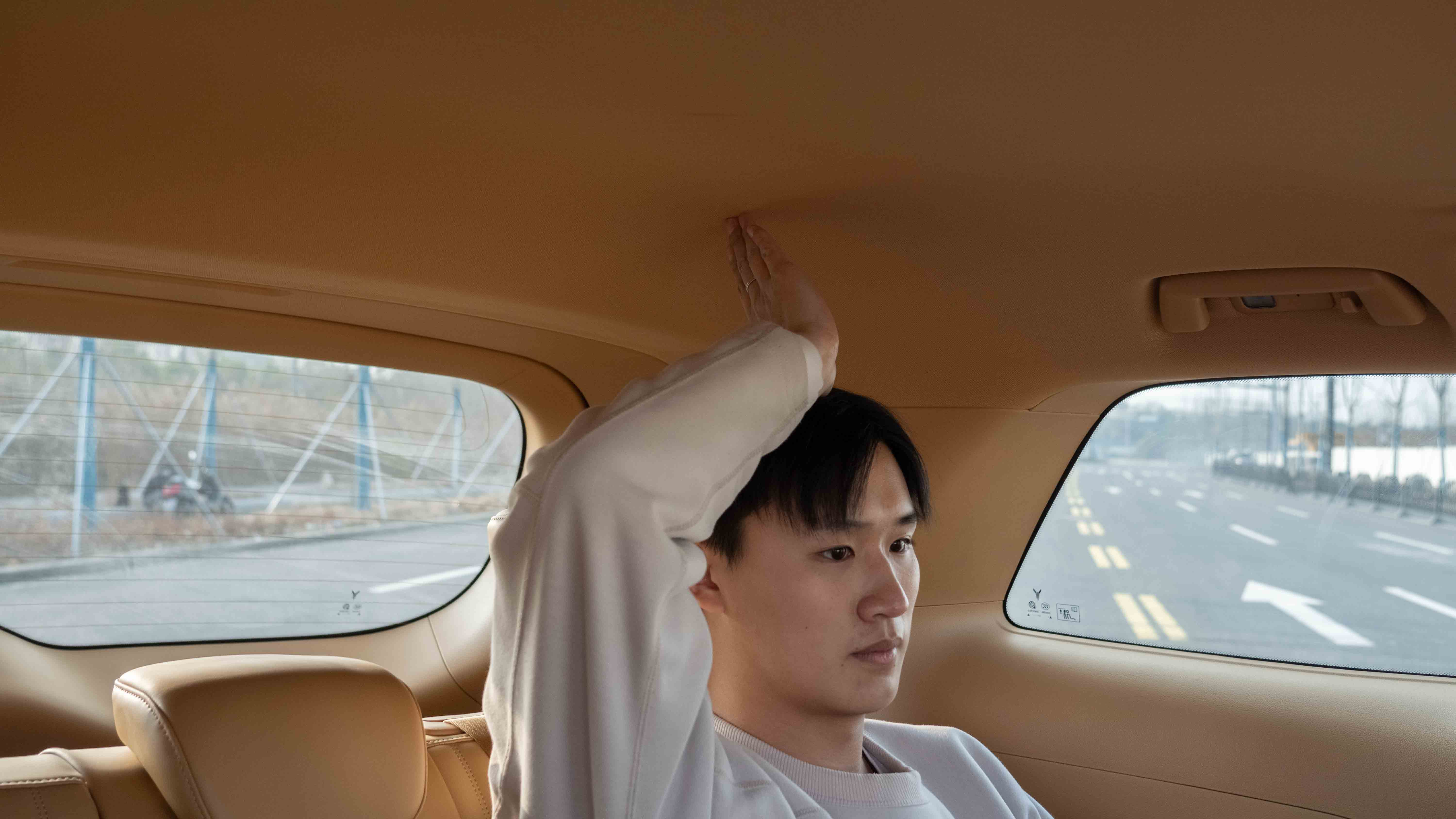
The foot space in the third row is not particularly spacious, but fortunately, the feet can reach under the second-row seat without needing to stretch another foot into the aisle, providing a relatively elegant sitting posture.
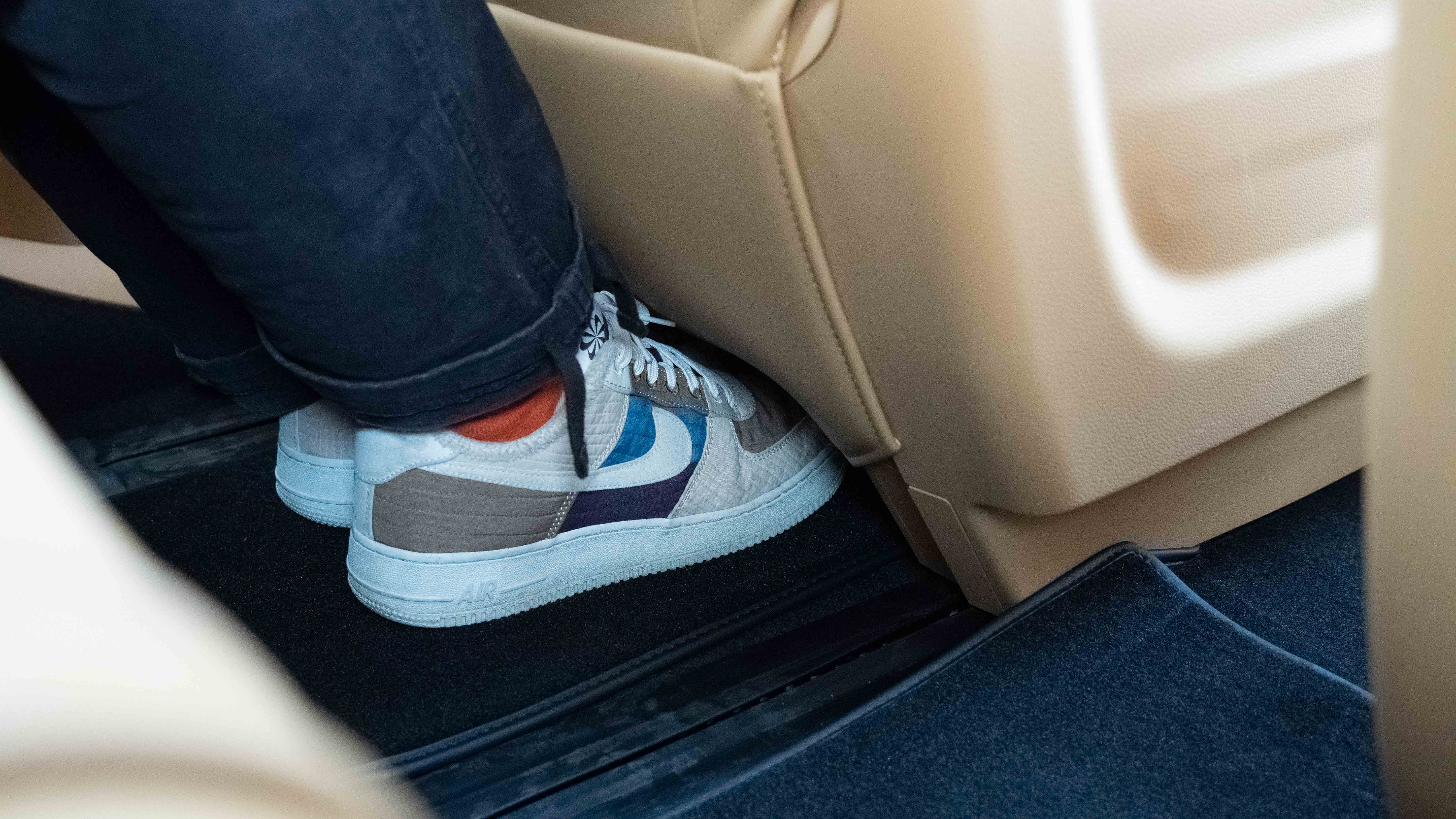
The length of the third-row seat is 520mm, and the seat height is 335mm. The basic parameters are very close to those of the second row, and the riding experience is the same. The spacious seat can provide a comfortable riding experience, and the leg support and seat back angle are suitable, providing good support. If an additional armrest could be provided in the middle of the backrest of the rear seat, the riding experience would be even better.
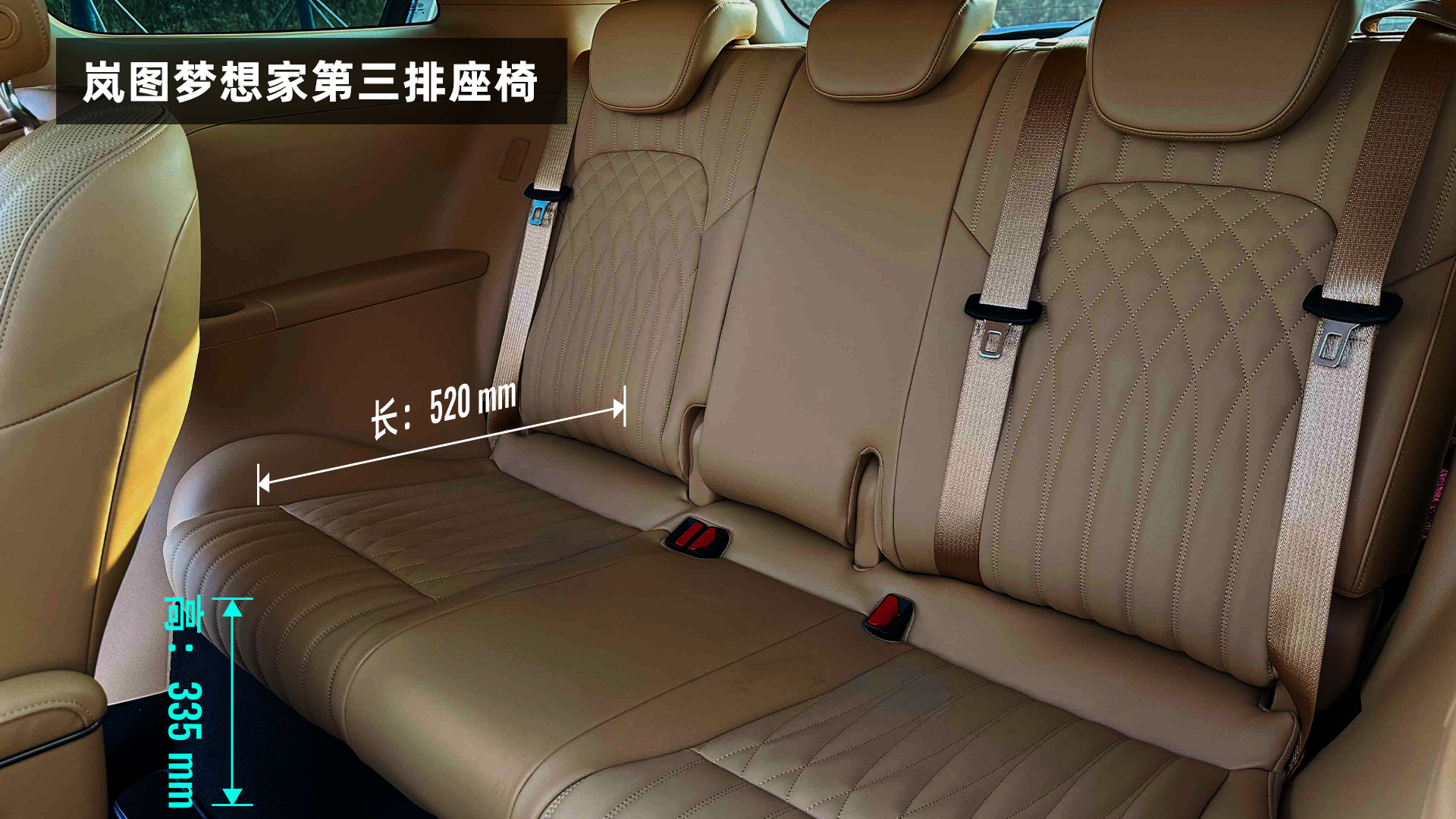
Finally, let’s talk about the front seats. The length of the seat cushion is 515mm, and the height adjustment range of the seat cushion is 360-415mm, which is relatively wide and suitable for most drivers. However, because the front of the Lan Tu Dreamer is very long, I prefer to adjust the seat to a higher position for better visibility when driving.
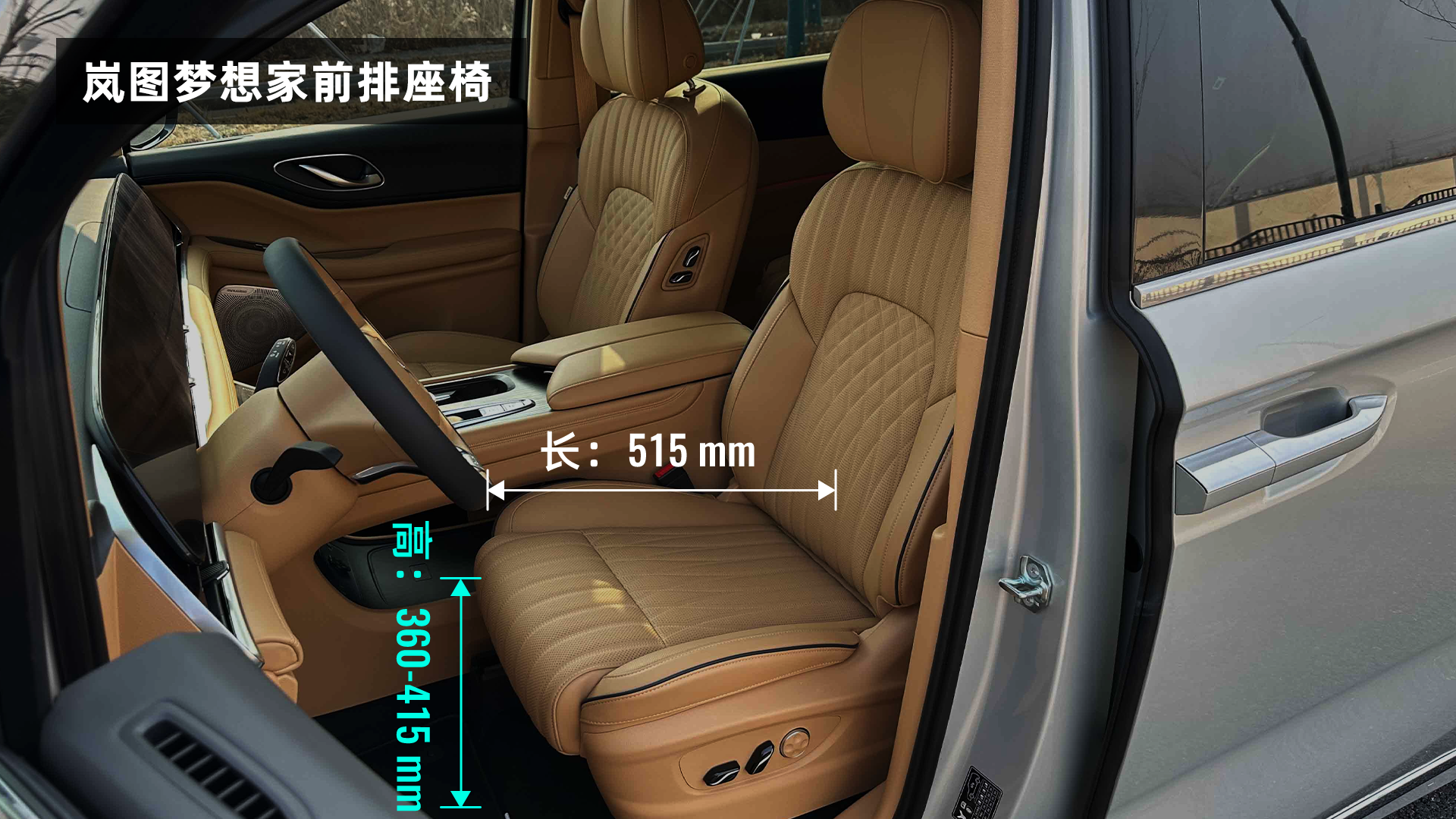
From a spatial perspective, the Lan Tu Dreamer is more suitable for four people traveling together because only in this case can all passengers on board enjoy relatively spacious space. In the case of six or seven people traveling together, although the riding comfort is improved, the space is slightly tighter.
Cabin: Resembling a Yacht Cabin?
After discussing the space, let’s take a look at the cabin of the Lan Tu Dreamer. Compared with the interior of models such as the Toyota Alphard and Buick GL8, the interior of the Lan Tu Dreamer is obviously much younger, and the beige and brown dual-tone interior also makes the Dreamer look more luxurious, resembling the style of yachts.
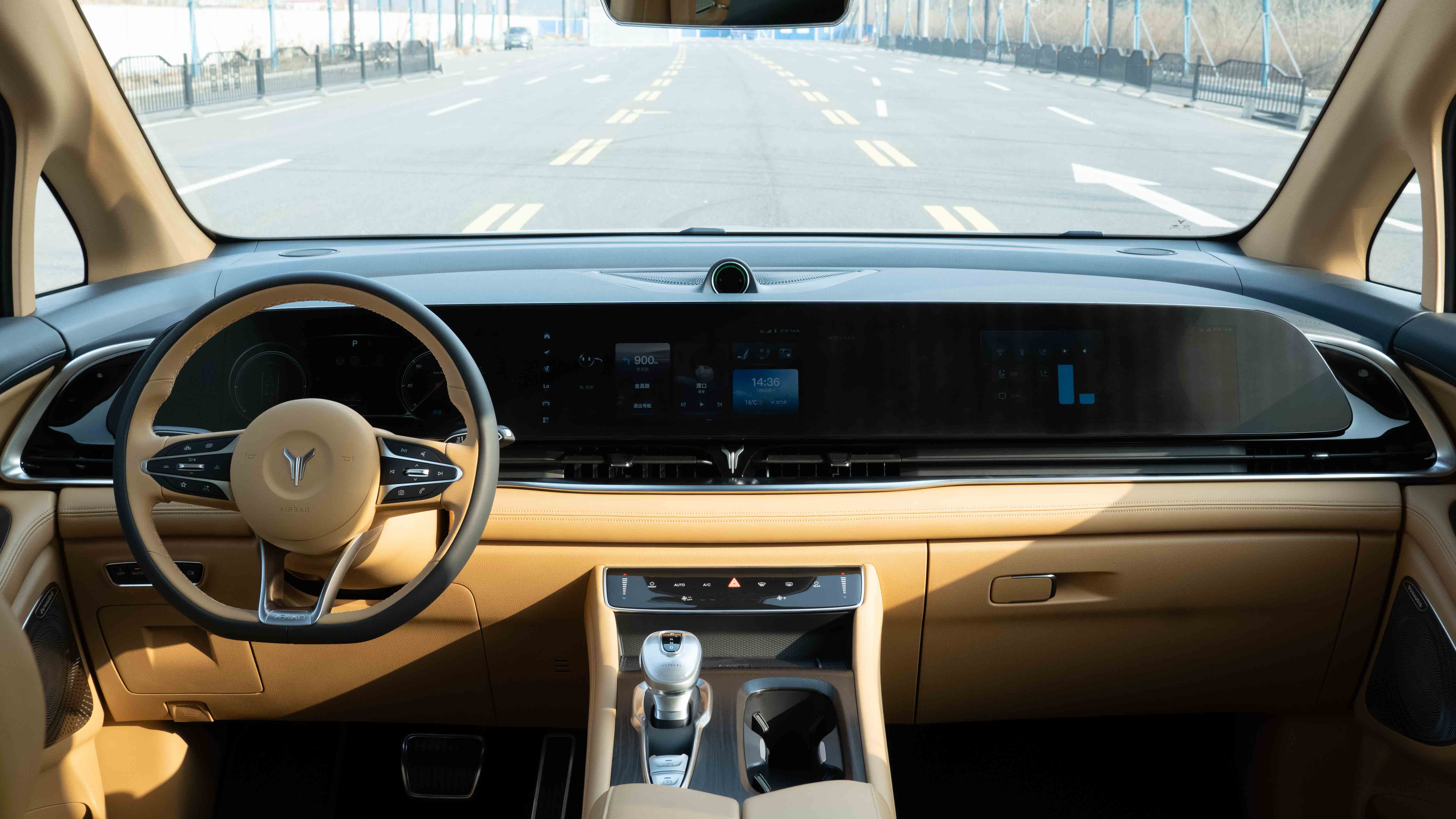 The LanTu Dreamer also adopts the popular triple-screen design with 12.3-inch displays for the main driver, center console, and co-driver, and is equipped with a Qualcomm Snapdragon 8155 vehicle chip and a gigabit 5G network. Both the driver and co-driver can push navigation, music, and other information. The co-driver’s screen also allows third-party collaborative apps to watch movies or variety shows, while the phone projection function provided is also very practical.
The LanTu Dreamer also adopts the popular triple-screen design with 12.3-inch displays for the main driver, center console, and co-driver, and is equipped with a Qualcomm Snapdragon 8155 vehicle chip and a gigabit 5G network. Both the driver and co-driver can push navigation, music, and other information. The co-driver’s screen also allows third-party collaborative apps to watch movies or variety shows, while the phone projection function provided is also very practical.
Below the screen is the air conditioning control panel, where all buttons are touch-sensitive. However, there is a lack of obvious vibration feedback, and it’s still necessary to look down at the air conditioning panel during actual operation, or directly control it through the voice assistant.
The wireless charging pad for mobile phones is located below the air conditioning panel. Placing an iPhone 14 ProMax on it leaves a lot of space left, and the left and right ends are equipped with anti-slip materials to prevent the phone from moving and stopping charging during driving.
The control for the rear electric door is located in the area of the roof reading light operation, and is touch-sensitive just like the air conditioning panel. Similarly, if vibration feedback can be added, the user experience will be greatly improved.
The LanTu Dreamer we tested is equipped with a Smart Package worth 70,000 yuan (currently discounted to 50,000 yuan), which includes a 10-speaker Danish audio speaker. The actual experience is not comparable to cars with thousands of watts of power and 20 speakers, but it still provides a well-balanced sound field and excellent auditory experience.
Appearance: Comparable to the presence of the Elfa
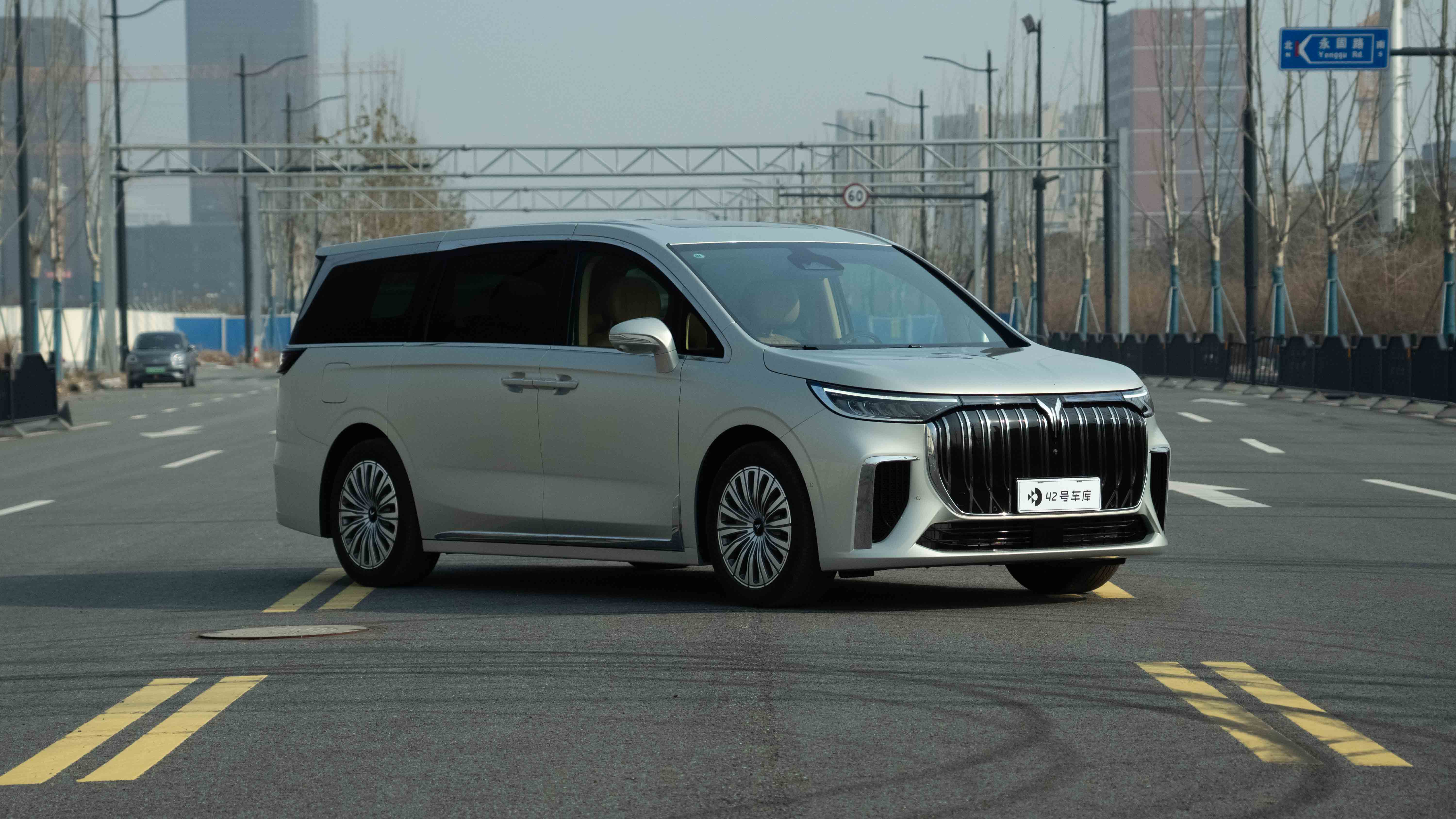 # The Dreamer’s Long Width Height Parameters and Appearance
# The Dreamer’s Long Width Height Parameters and Appearance
Whether it’s the long, wide, and high parameters of the Dreamer, or the first impression of the actual appearance, the Dreamer can give you a sense of presence. One of the main reasons is that this car is big enough. The long, width, and height of the Dreamer are 5,315 × 1,985 × 1,800 mm, which is much larger than common MPVs like Alphard and GL8. It is almost as long as the Mercedes V-Class with a commercial vehicle chassis.

Another important aspect is the appearance of the Dreamer. Like most MPVs that focus on commercial use, the Dreamer also has an extremely solemn front face. As in other luxury MPVs to create an imposing and luxurious feeling, the Dreamer uses a large and heavily chrome-plated design.
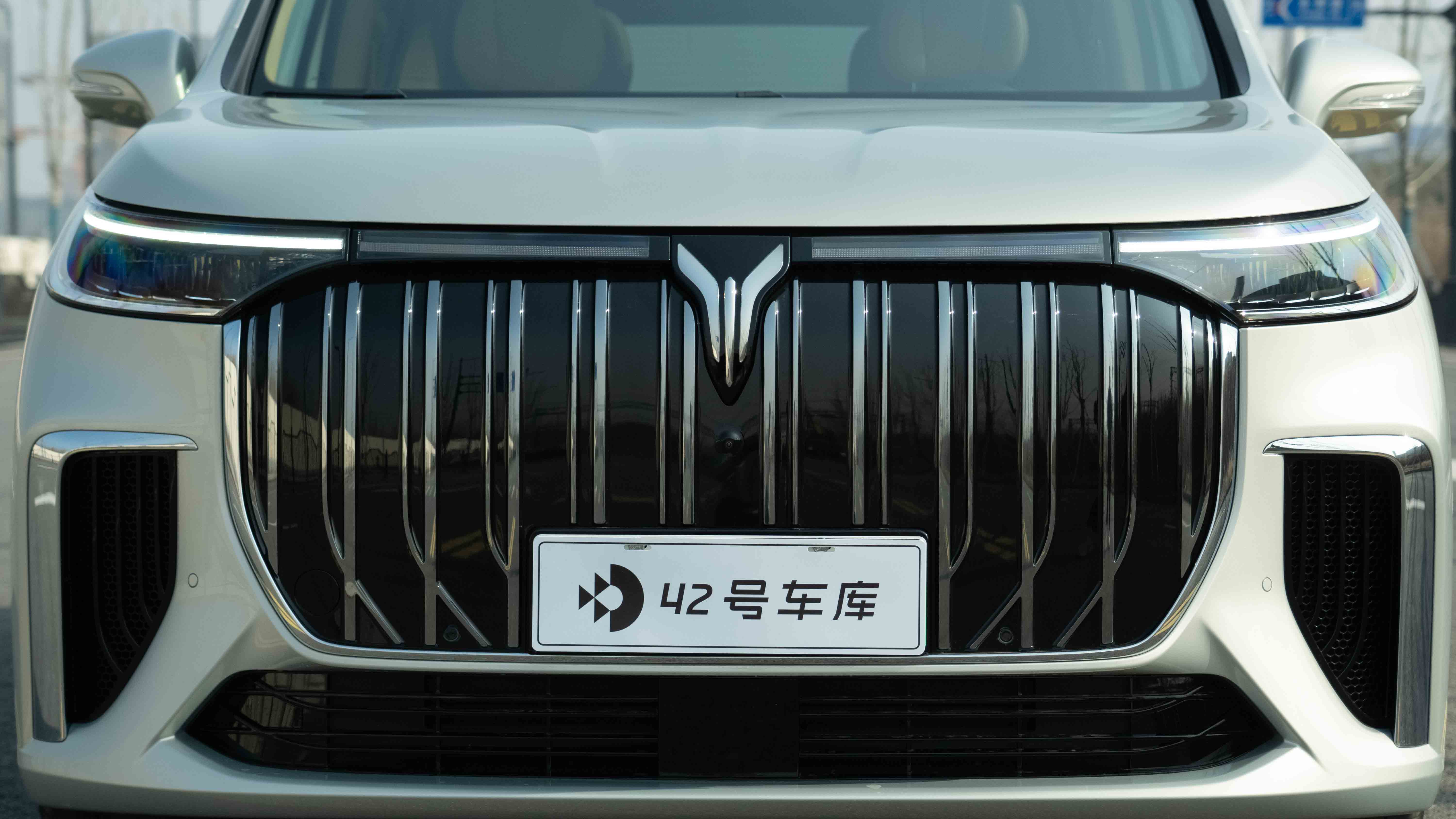
The vertical chrome-plated grille layout can effectively enhance the vertical visual feel, reducing the “fat” feeling caused by the 1,985 mm width of the Dreamer. At the same time, in order to further optimize the horizontal visual effect and reduce the abruptness of the large area of chrome-plated grille, vertical chrome-plated decorations are added on both sides of the grille, using a “fang”-shaped air intake to balance the visual center of gravity of the front face and increase the overall momentum of the vehicle.

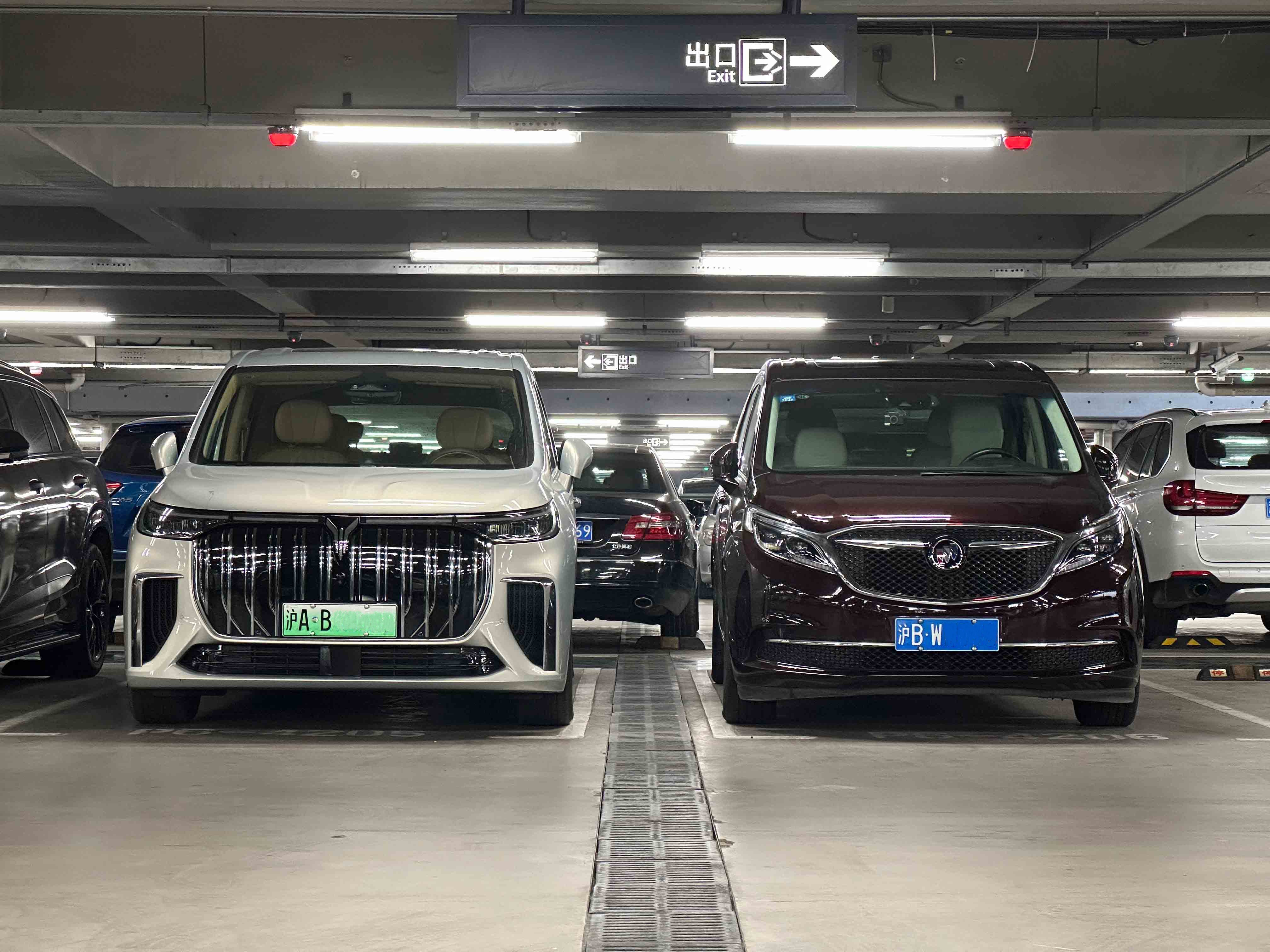
Therefore, when you drive the Dreamer into the doorway of an enterprise, a star hotel, or a high-end restaurant, and park it among a bunch of Alphards, Lexus LMs, and GL8 Evias, the appearance of the Dreamer is definitely not inferior to any one of them, and as a boss, you don’t have to worry about losing face. Moreover, the glowing badge can also allow bosses to easily find their cars in a sea of Alphards and GL8s after finishing a night meeting and walking out of the building.
There is a small detail at the front of the car. Generally, the front hood of vehicles will have many lines that highlight a sense of power. However, on the front hood of the Voyah Dreamer, the muscle lines were cleverly designed into the style of the Voyah logo. It is a small Easter egg and also a showcase of Voyah’s bodywork craftsmanship.

On the side of the car, the Voyah Dreamer is different from the traditional MPV and pure electric MPV with its short body and long head design. The Dreamer, on the other hand, leaves a very long distance for the front of the car, even resembling the length of an SUV’s front. Coupled with the use of more straight lines on the side of the body, compared to most MPVs, the Dreamer has a more graceful posture.
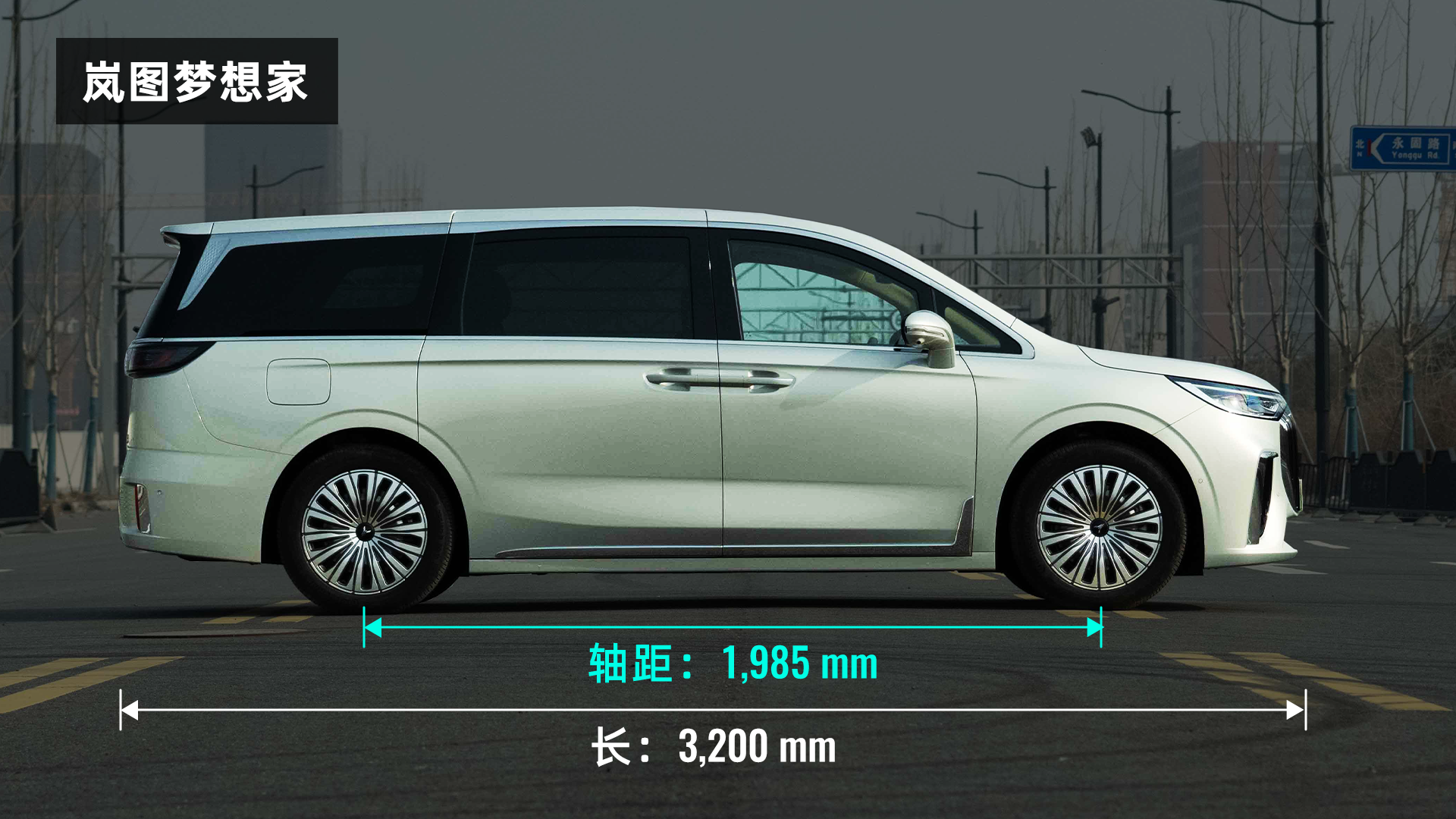
Under the long front of the car, the Voyah Dreamer Zero Carbon version also comes equipped with a 40L front trunk, which can fit two standard-sized backpacks when stacked. In daily use, it can easily hold a box of water and a car charger.
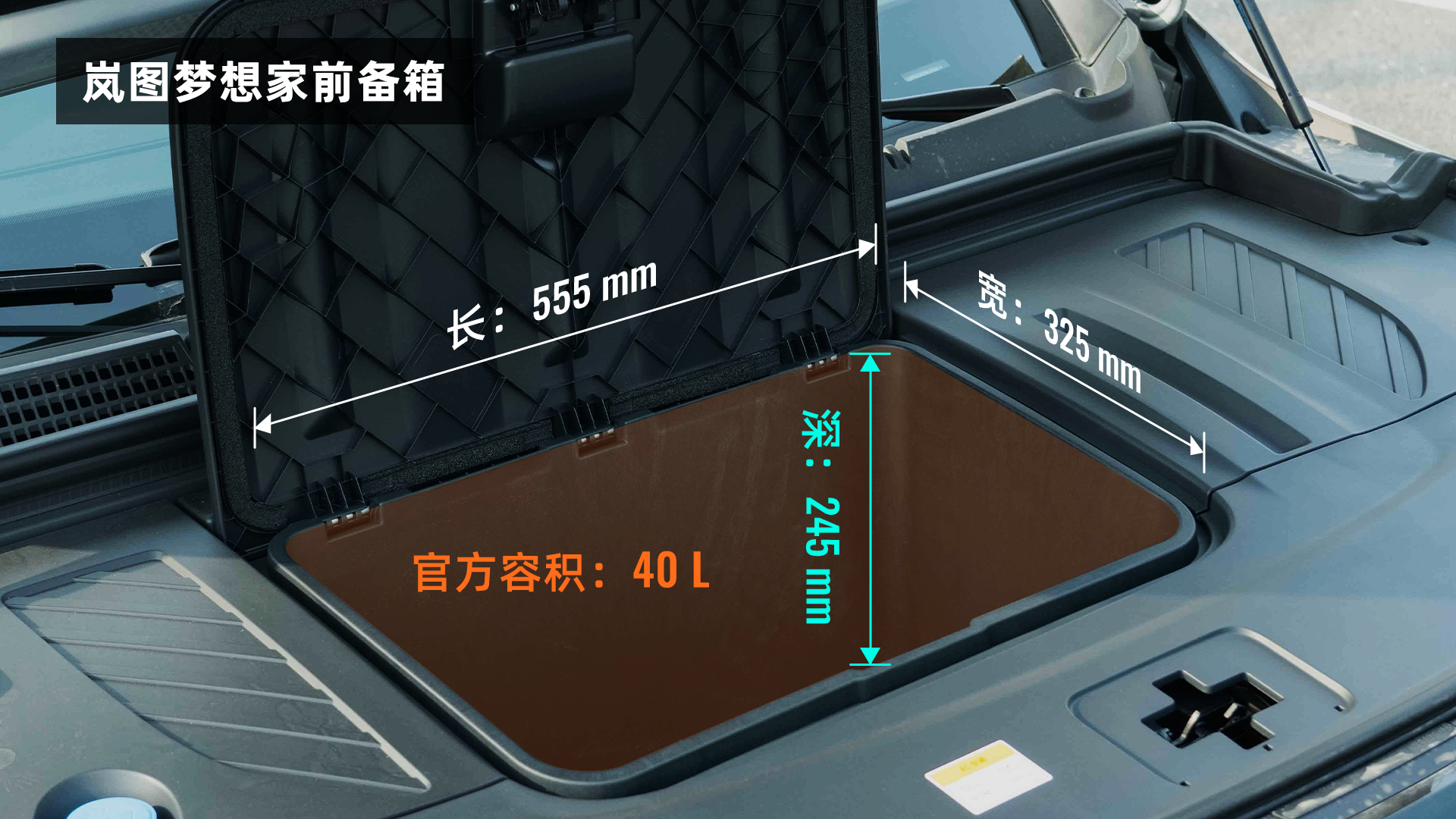
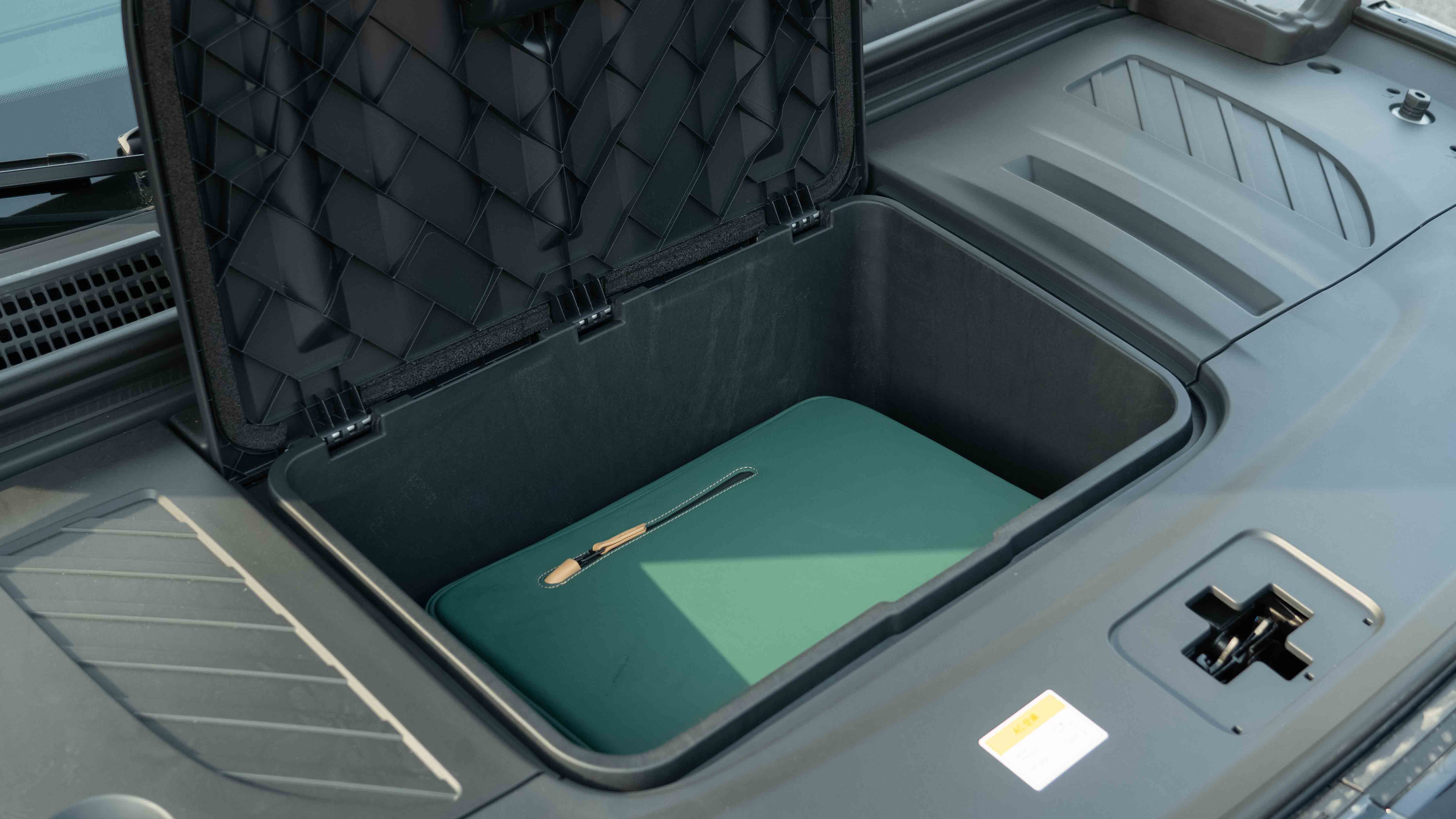
The straight lines extend all the way to the back of the Voyah Dreamer, without any overly assertive designs. Compared to the strong presence of the front face, the back is more restrained but the overall design is still very coordinated. In addition to the privacy glass used on the second and third row windows, the tailgate glass of the Dreamer also uses privacy glass, ensuring the privacy of the trunk and the rear passengers.
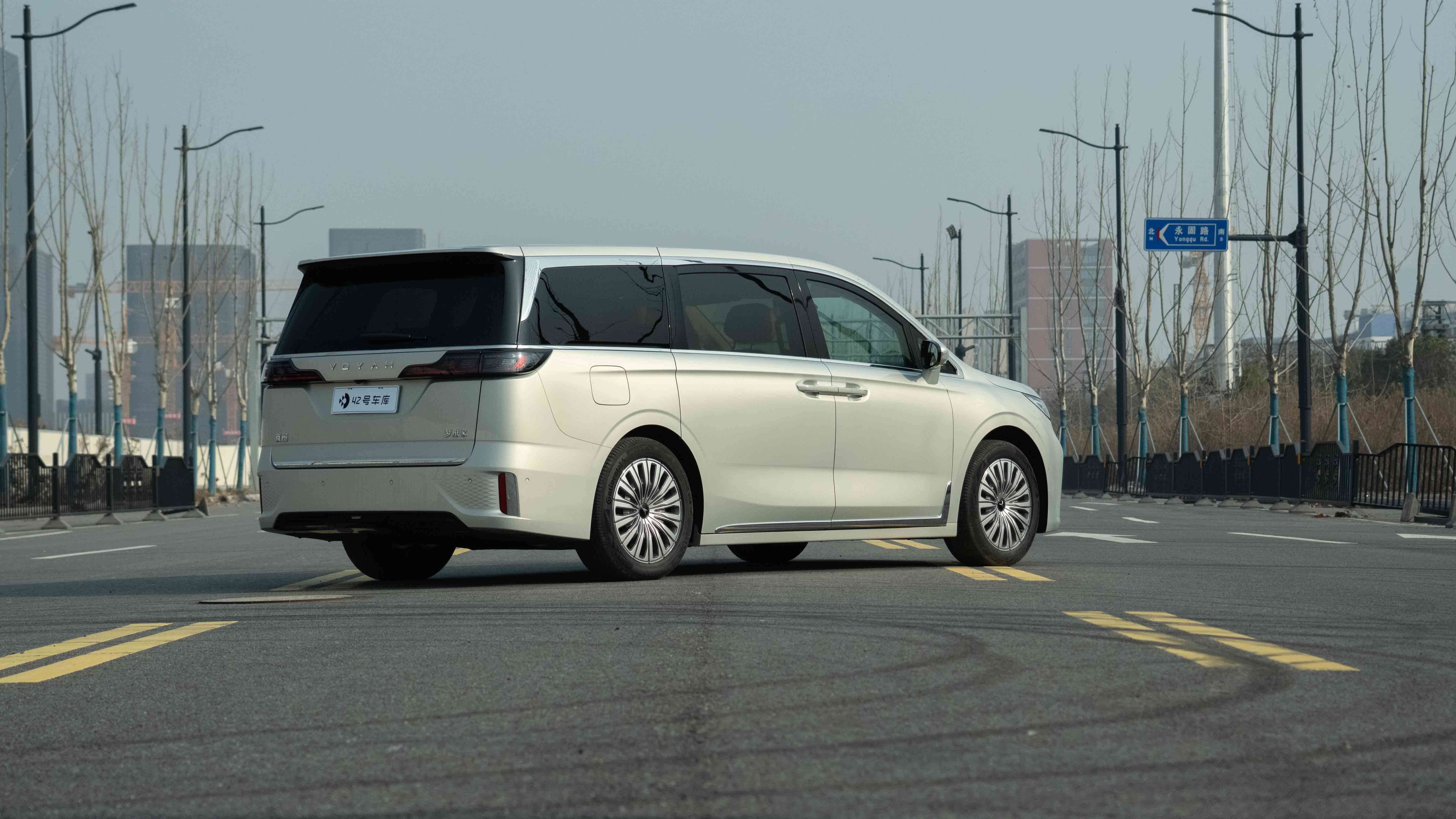
As the width of the Voyah Dream Car is close to 2 meters and the height reaches 1.8 meters, the opening area of the tailgate is very large. After opening, the width of the opening is 1,235 mm and the height is 990 mm. The opening area is very considerable, reaching a depth of 570 mm, and the official capacity is 427 L. For an MPV, such capacity is already quite considerable and is close to the trunk capacity of a standard compact SUV. It is no problem to put down the luggage needed for four people to travel for a week.
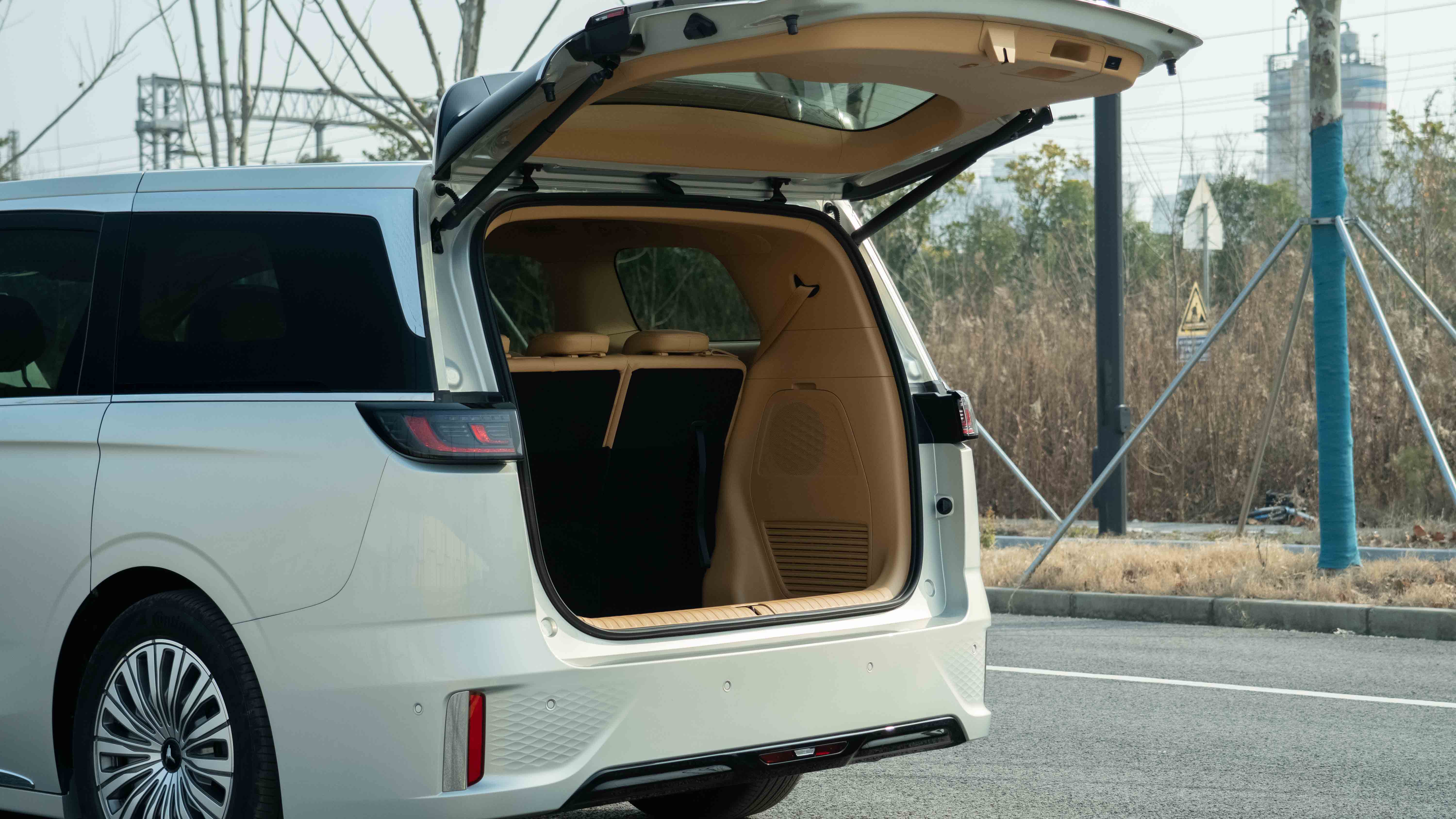
If there are fewer than or equal to four people in daily travel conditions, the expandable capacity can be further expanded by folding down the third row, but the high platform of up to 268 mm after folding down the third row will affect the placement of items.

However, for the raised height of this platform, Voyah states that there are two fixed crossbeams set below the third row, so it cannot be removed flexibly, but the advantage is that the third row has a reinforced structure with crossbeams to ensure the stability of the vehicle in case of a rear-end collision.
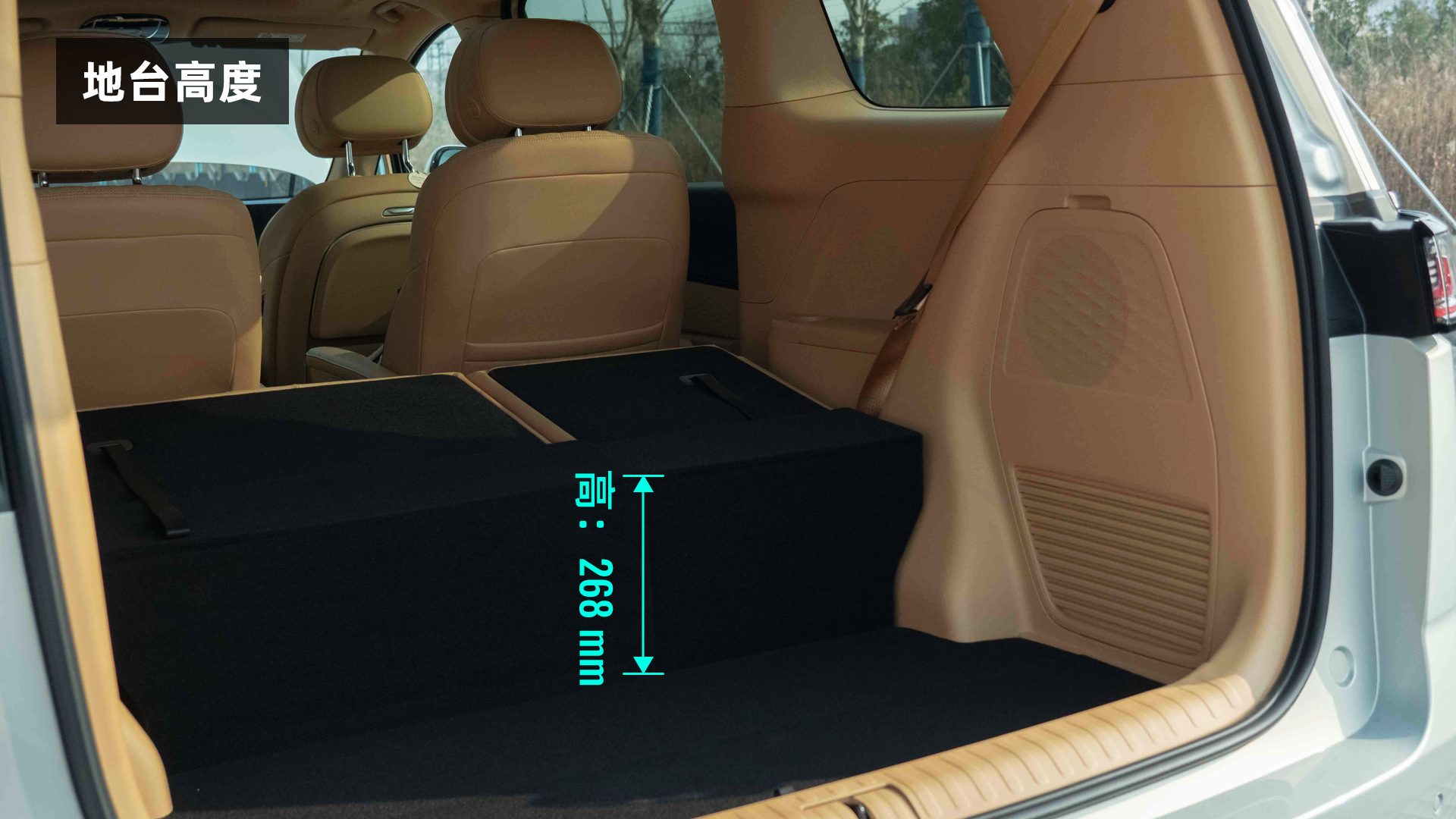
In terms of design, Voyah Dream Car follows the mainstream design style of MPVs, with a large area of straight waterfall-style chrome grille, continuous LED light strip, and slender body. It belongs to the type of stability and momentum. You will not feel that this car is a different type among MPVs because of its new energy, but the Dream Car also has its own ideas. The chrome decoration on the car emblem and from A-pillar to D-pillar can enhance the recognition of the vehicle, standing out among GL8 and Alphard which look almost the same.

In terms of safety, it is not like most MPVs fully occupying the passenger cabin space of the vehicle shell, and the Dream Car still leaves space for the front and rear of the car. The buffer distance of the front cabin is larger, and the third row is not sitting in the trunk. No matter who is in the car, safety is the most important point for the MPV nowadays.## Conclusion
With a 566 km city electric range and a 391 km highway electric range, the key parameters for the ORA Lightning Cat Dream Edition 0 Carbon make it more suitable for city or suburban driving. This is also the main purpose for business MPVs nowadays. Compared to the GL8 MPV at the same price point, the Lightning Cat Dream Edition’s pure electric smoothness, economy, and NVH (noise, vibration, and harshness) are unmatched.
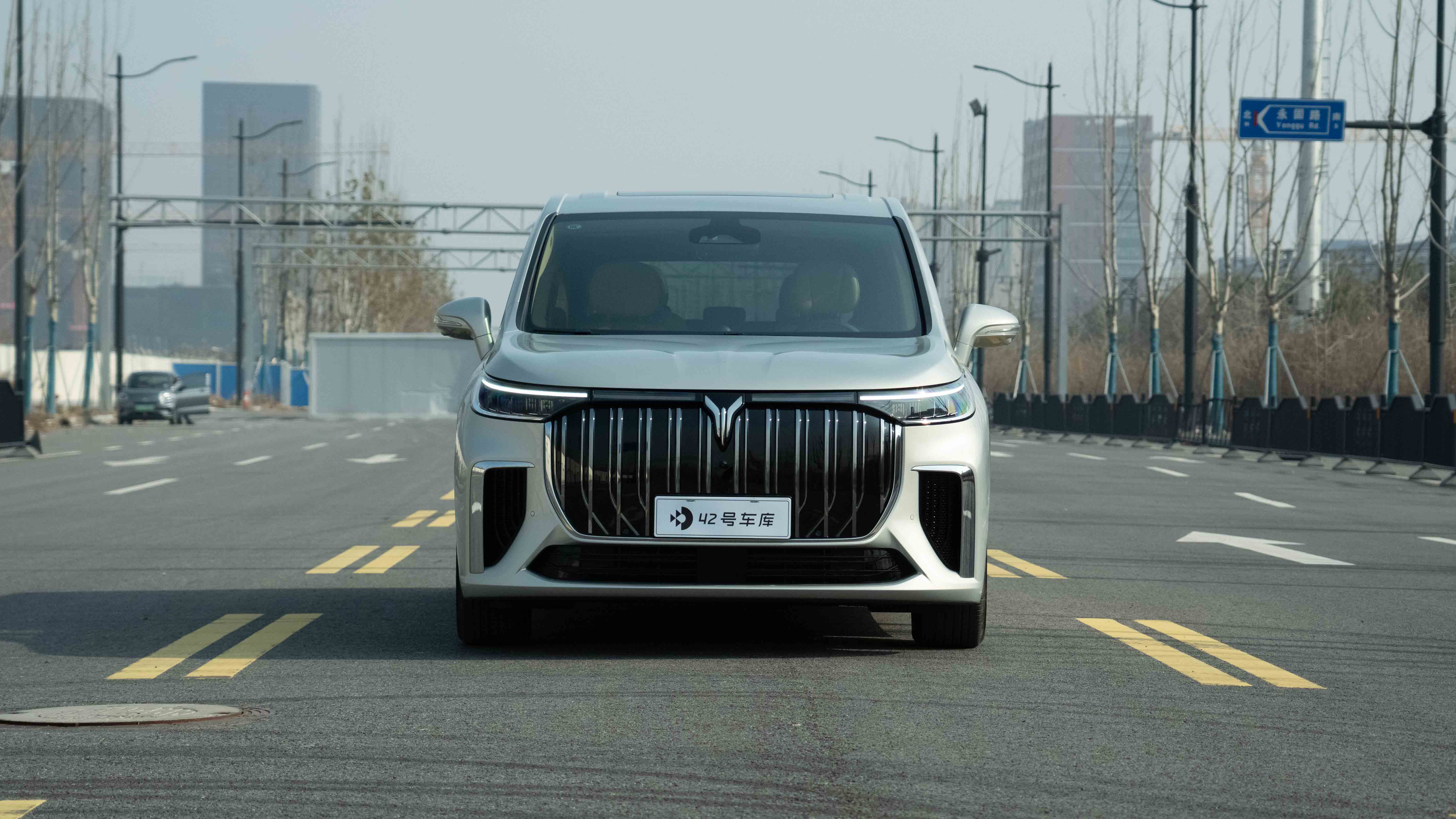
Even in heavy traffic, there is no need to worry about frequent gear shifting and fuel efficiency issues, giving drivers, bosses, and families a fantastic riding experience. Even when in a hurry, with the Lightning Cat’s front double-wishbone and rear five-link suspension, air springs, CDC electromagnetic shock absorbers, dual motor four-wheel drive with a maximum power of 320 kW, maximum torque of 620 N·m, and zero to 100 km/h acceleration in just 5.9 seconds, these specs give this MPV a performance of luxury sports cars.
In terms of interior design, the Lightning Cat Dream Edition incorporates a simple and luxurious style along with safety considerations, which are two aspects that the MPV market has yet to fully address. The average age of global high-net-worth individuals is gradually decreasing, and even executive sedans are turning towards technology and intelligence. Capturing the needs of this group equals capturing the pulse of the high-end automobile market.

Finally, let’s talk about price. With an additional 50,000 yuan for the extended range package and the intelligent enjoyment package, the price of the ORA Lightning Cat Dream Edition is 469,900 yuan. With its deluxe features at a price point of less than 500,000 yuan, the Lightning Cat leads the market in affordability compared to traditional MPVs. However, the pure electric intelligent MPV field in China is rapidly expanding, and whether the Lightning Cat Dream Edition can withstand the pressure will depend on how it continues to evolve.
This article is a translation by ChatGPT of a Chinese report from 42HOW. If you have any questions about it, please email bd@42how.com.
